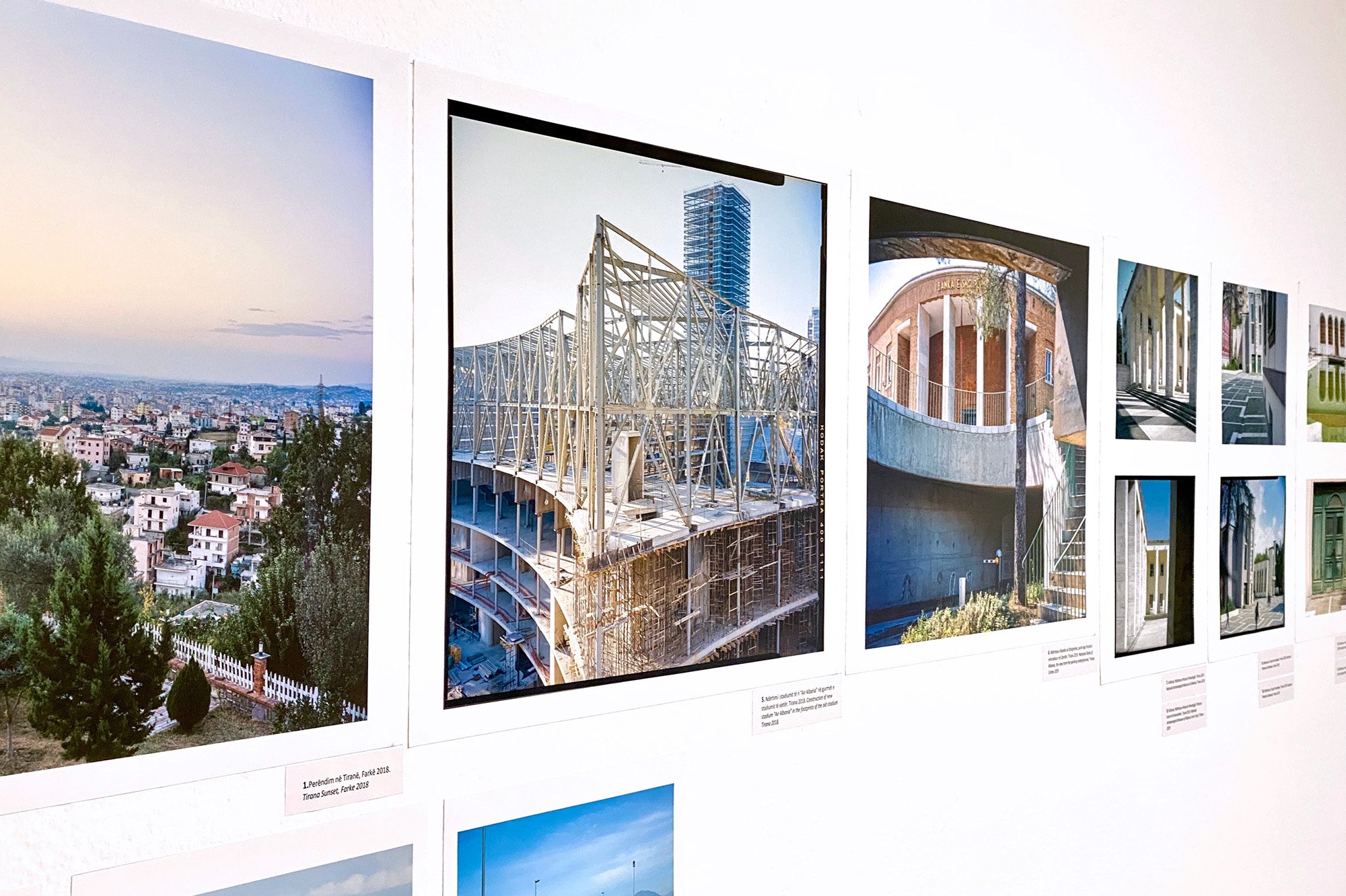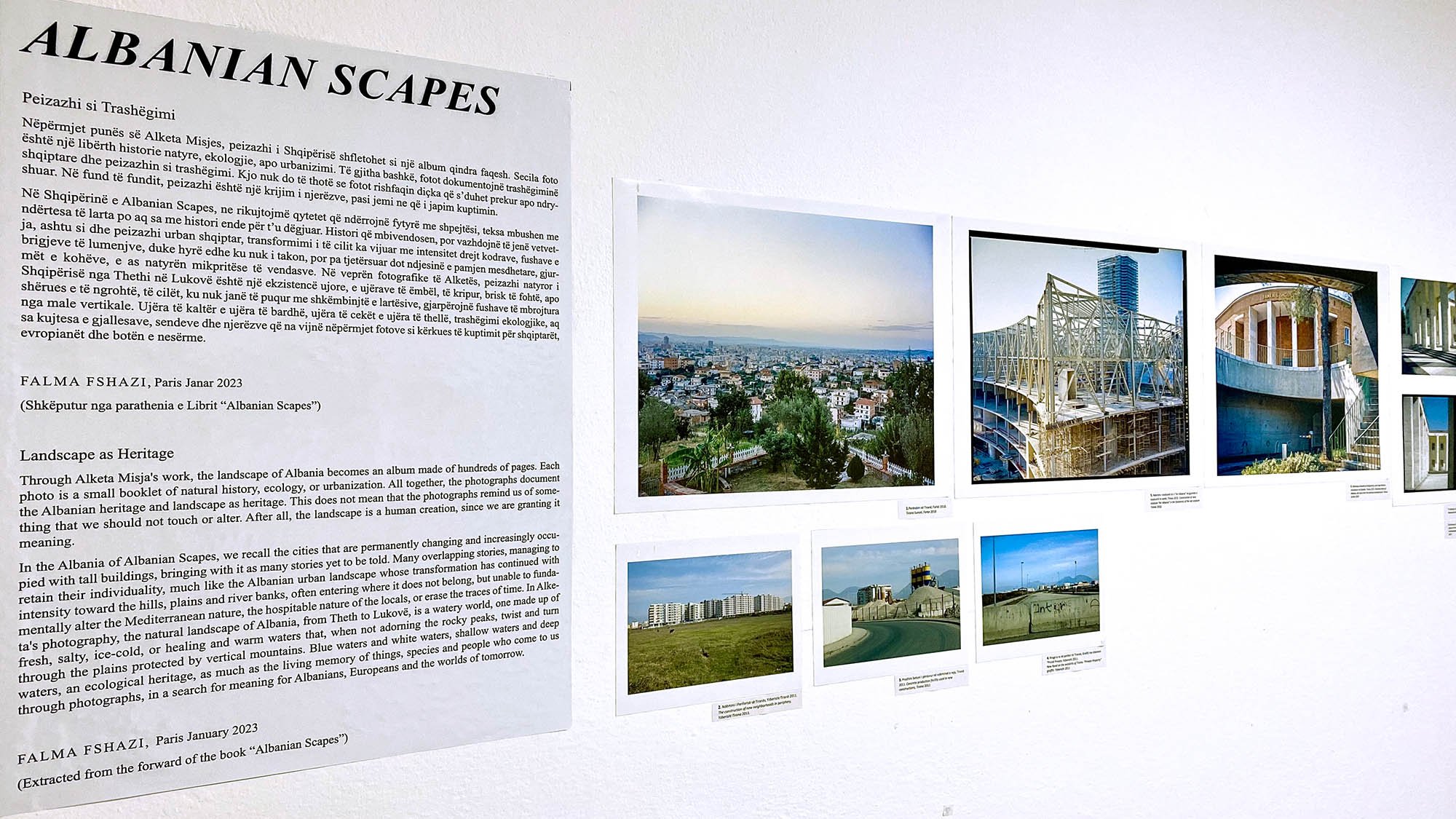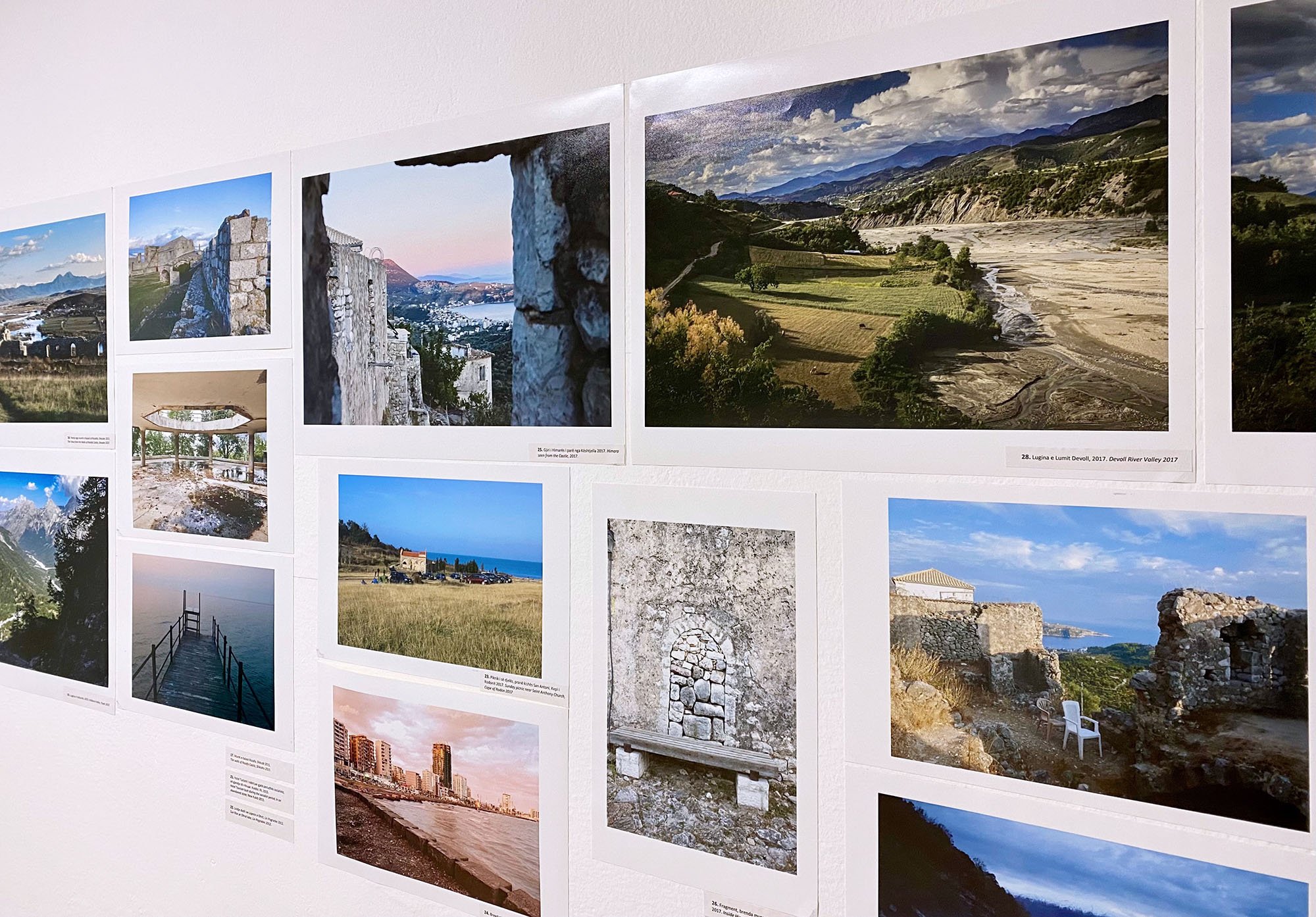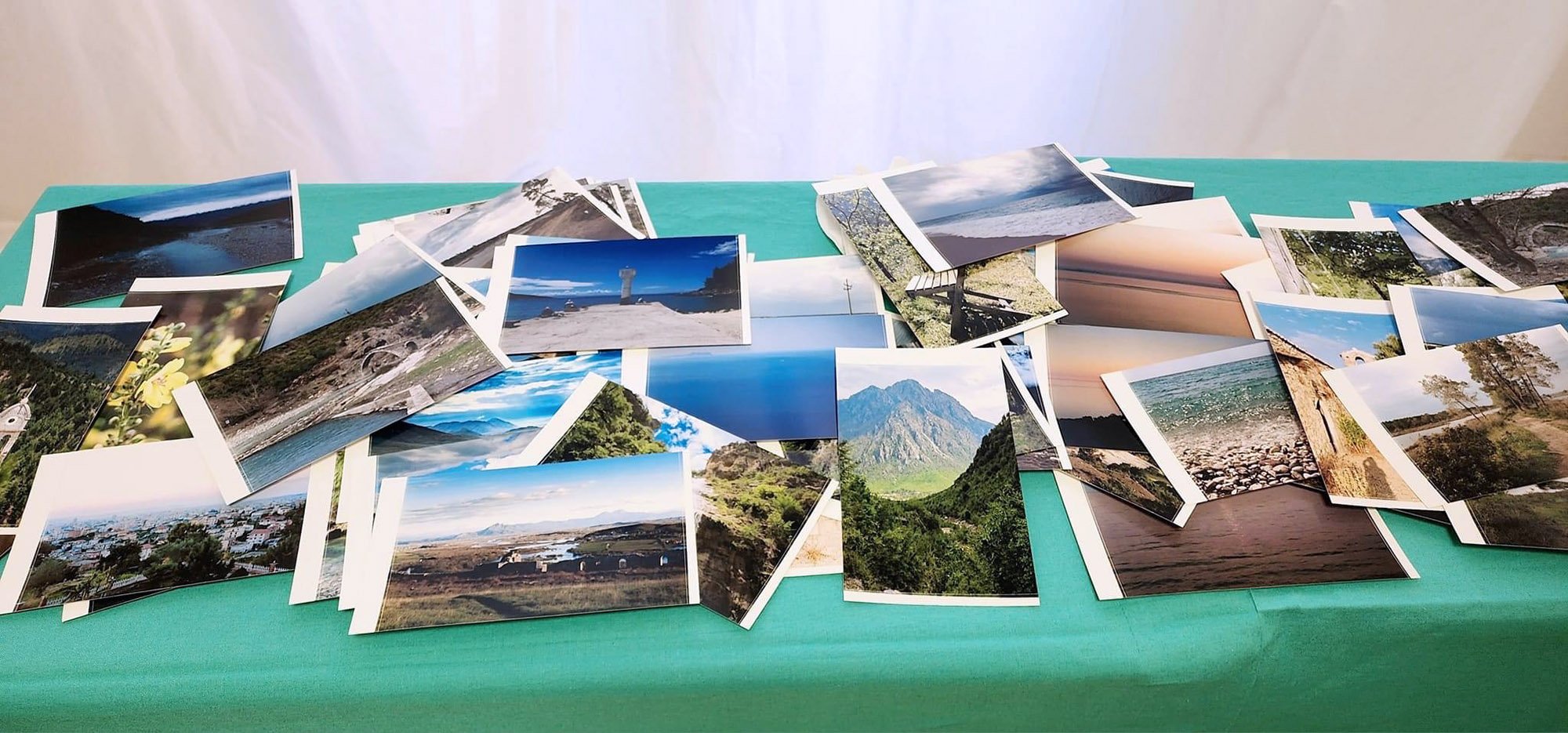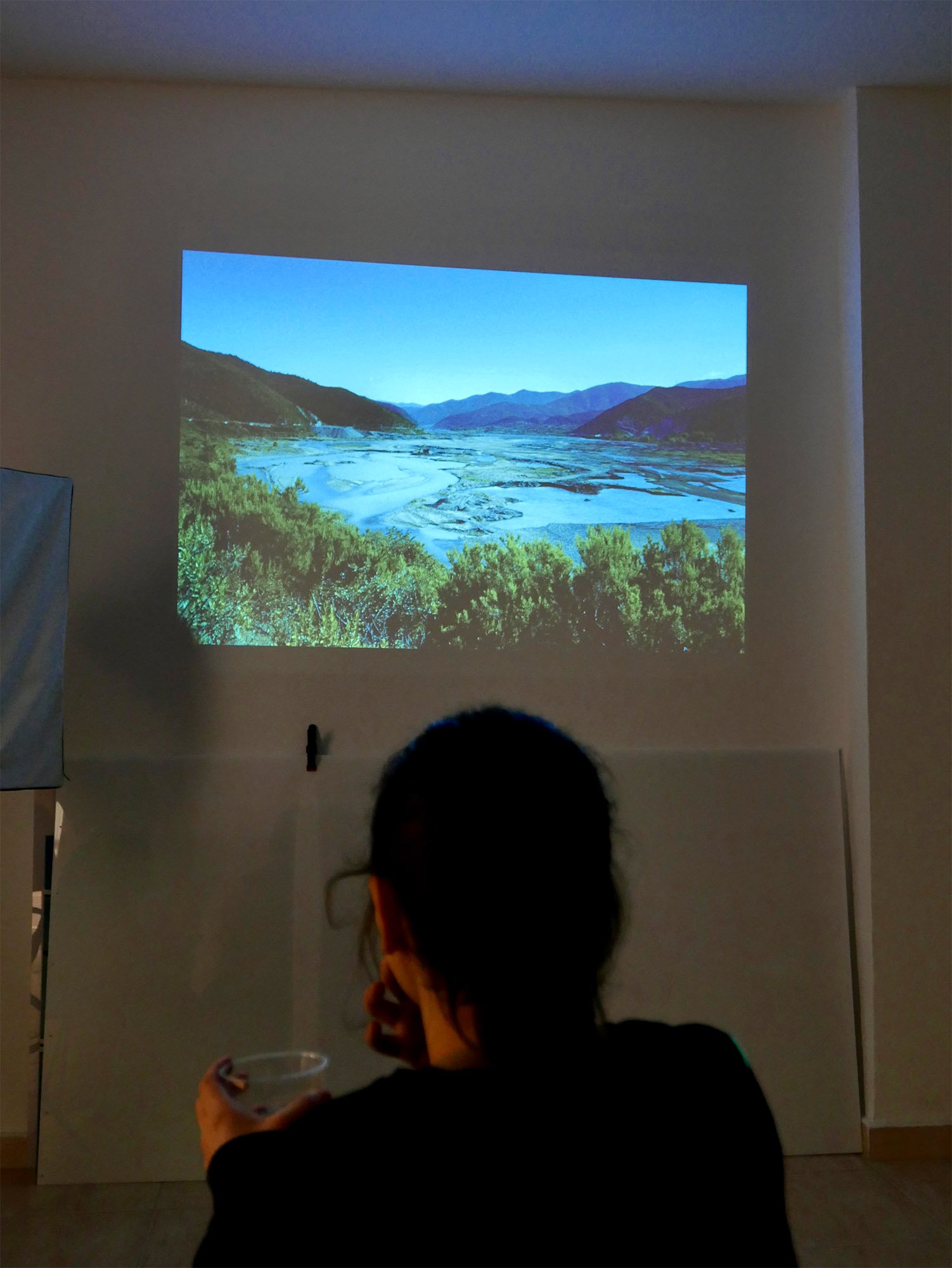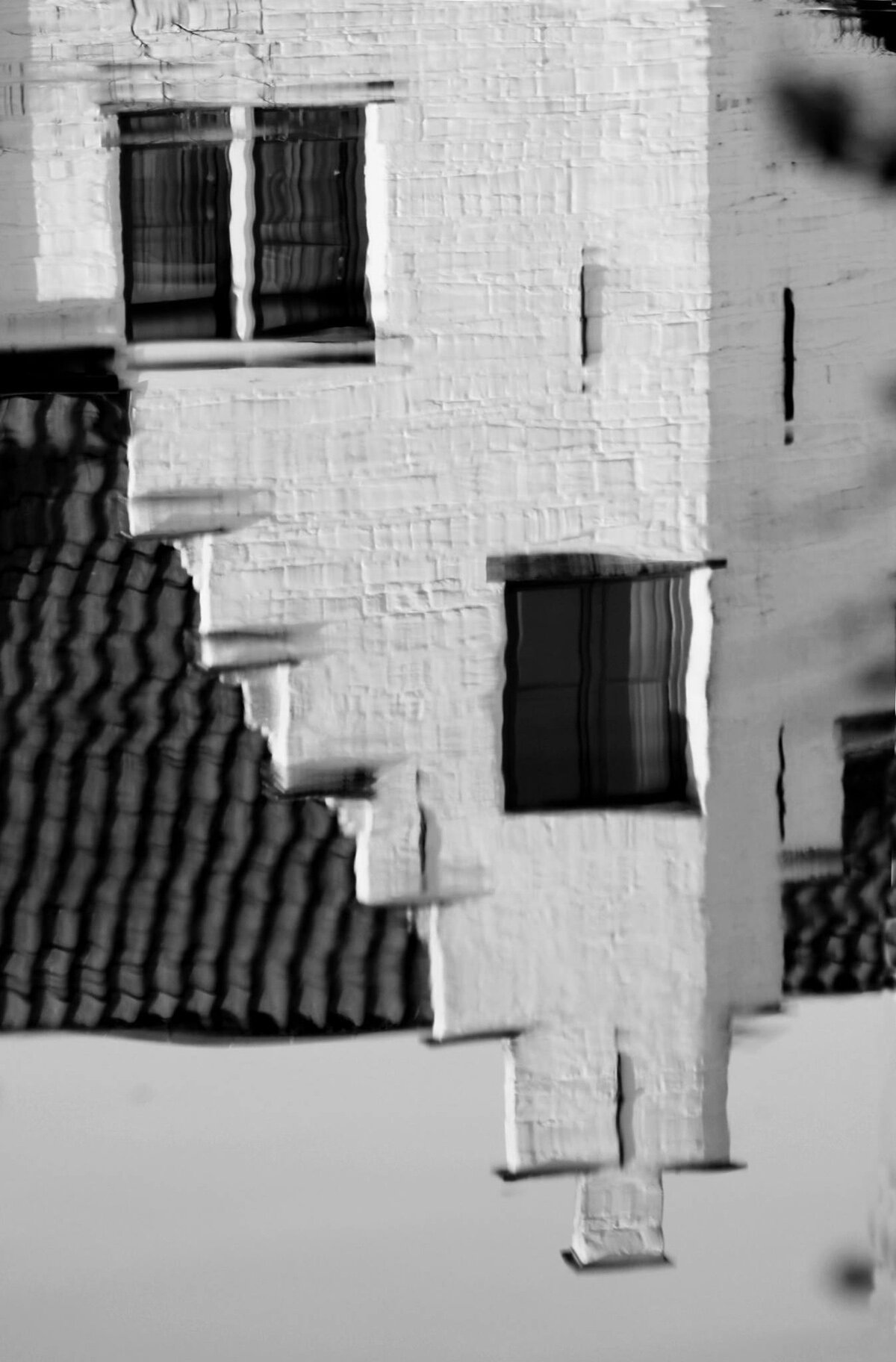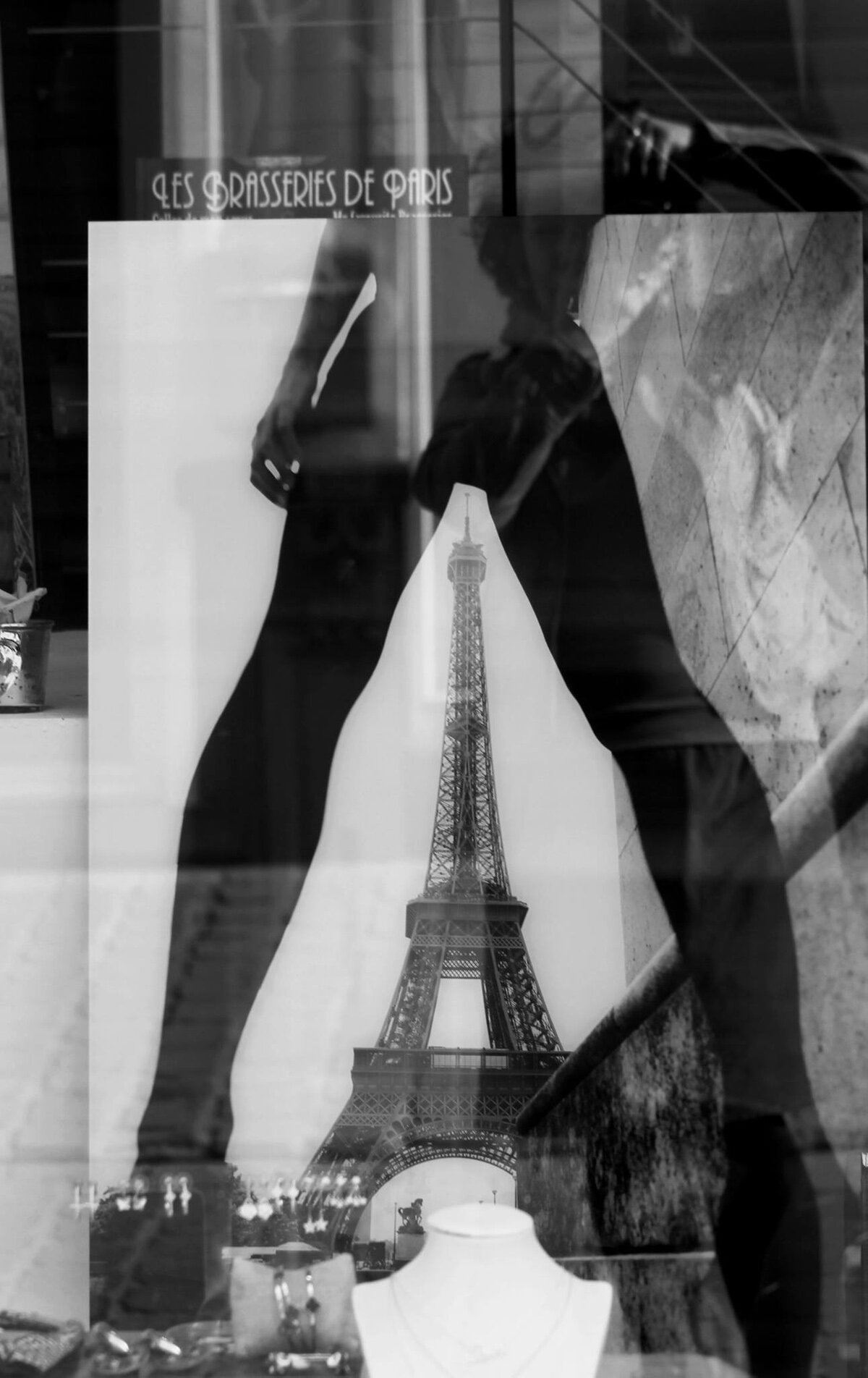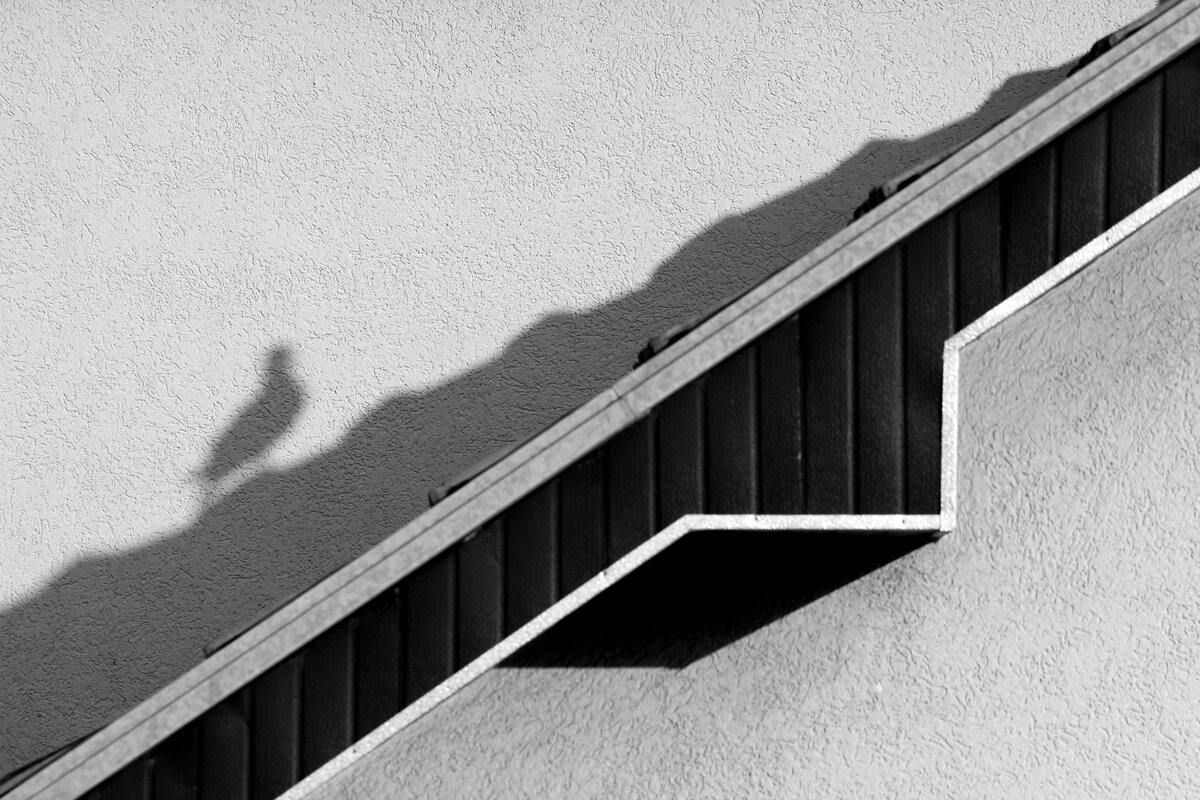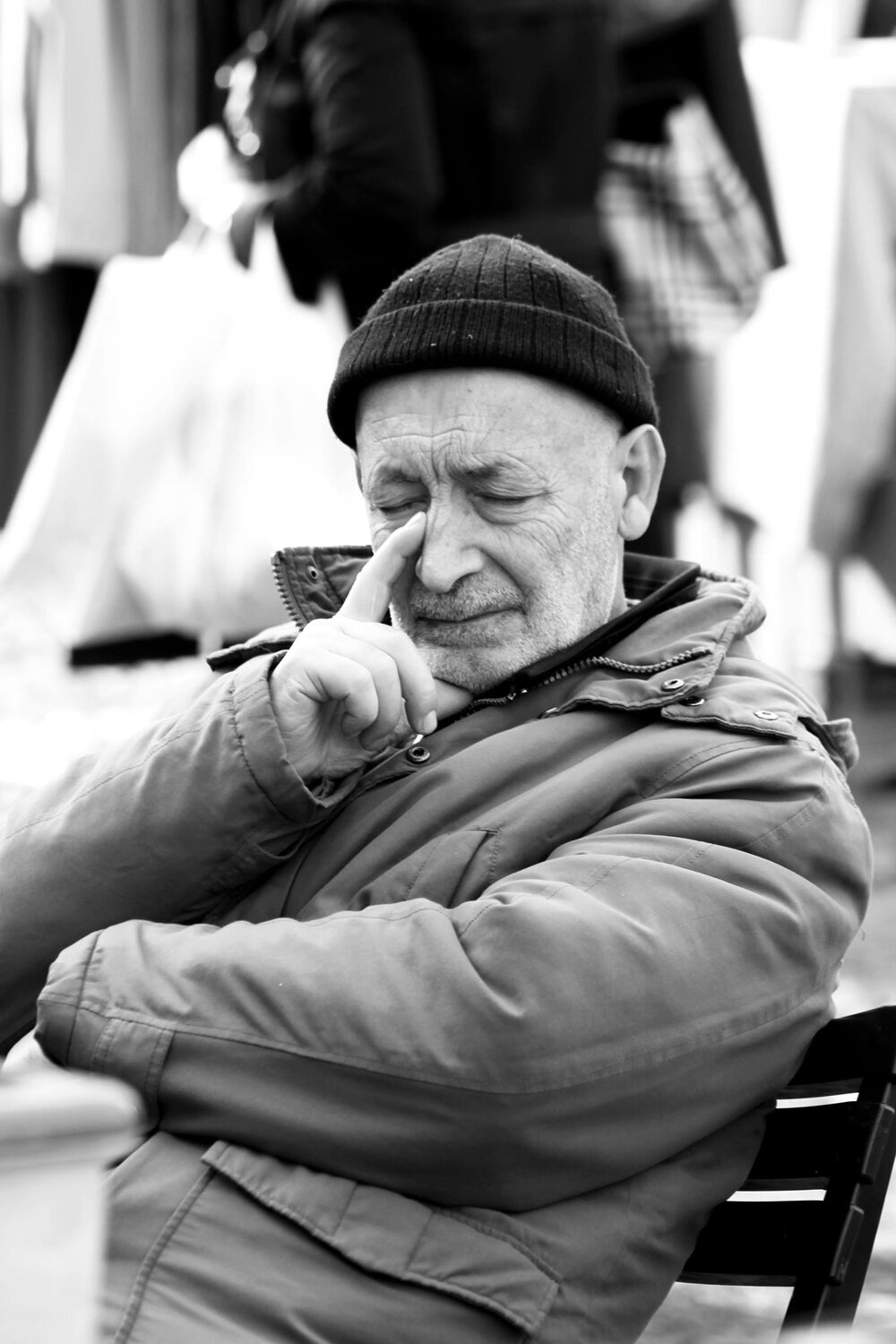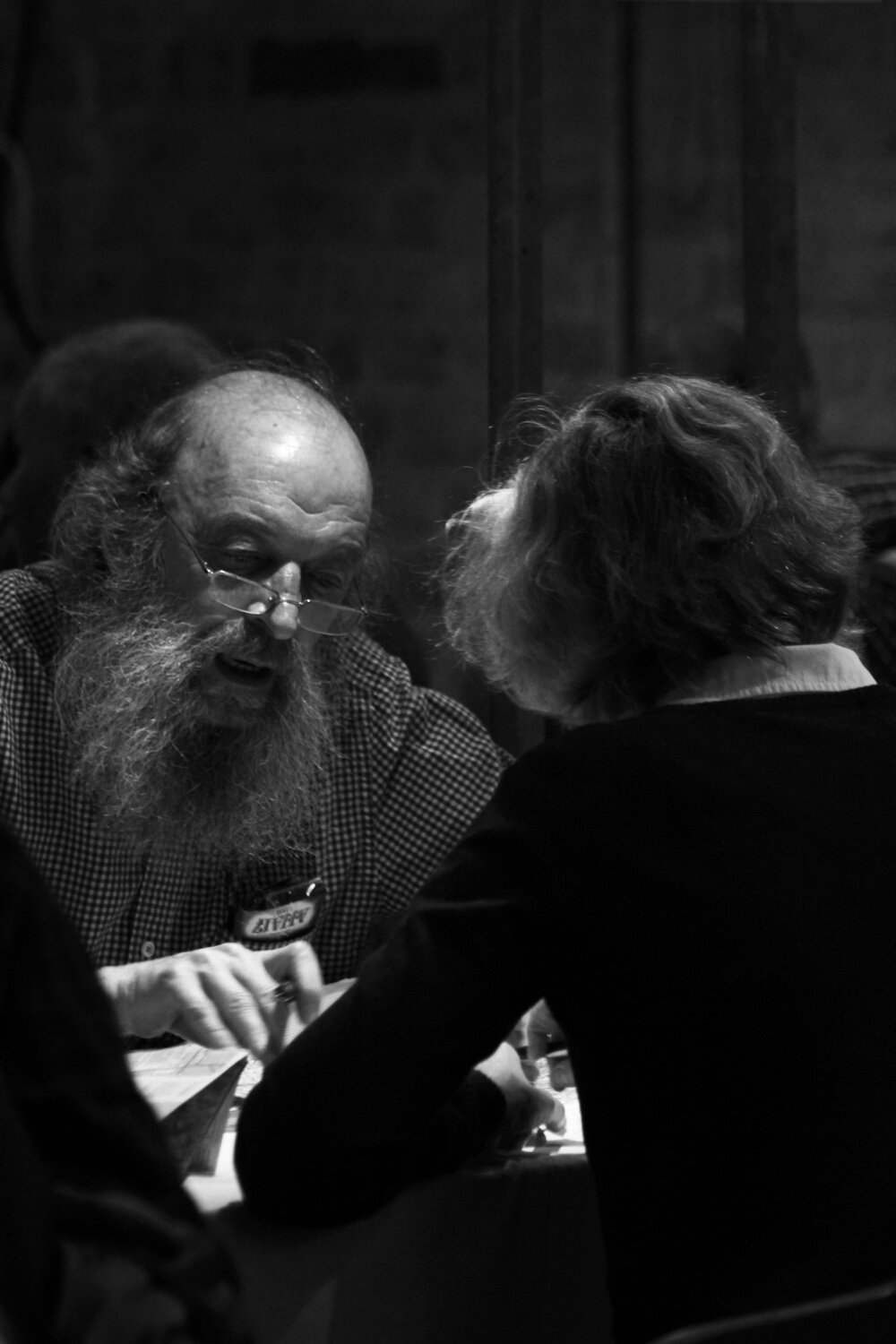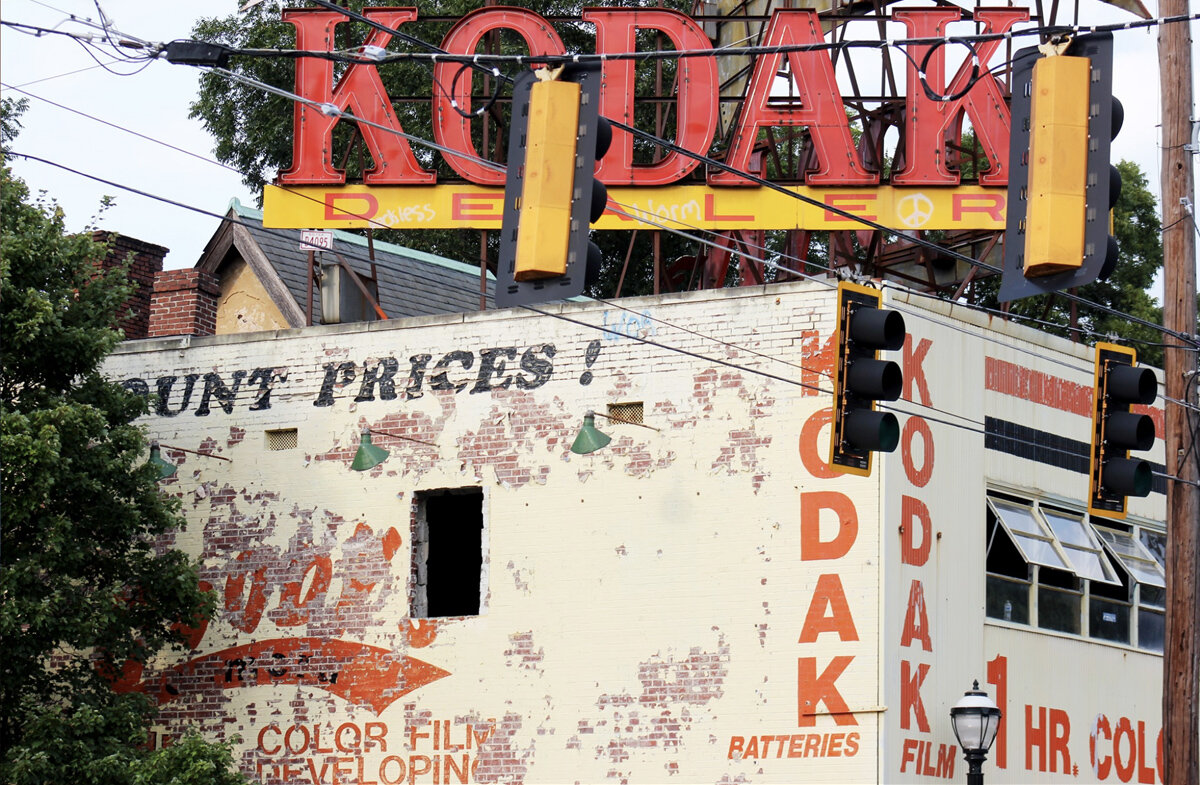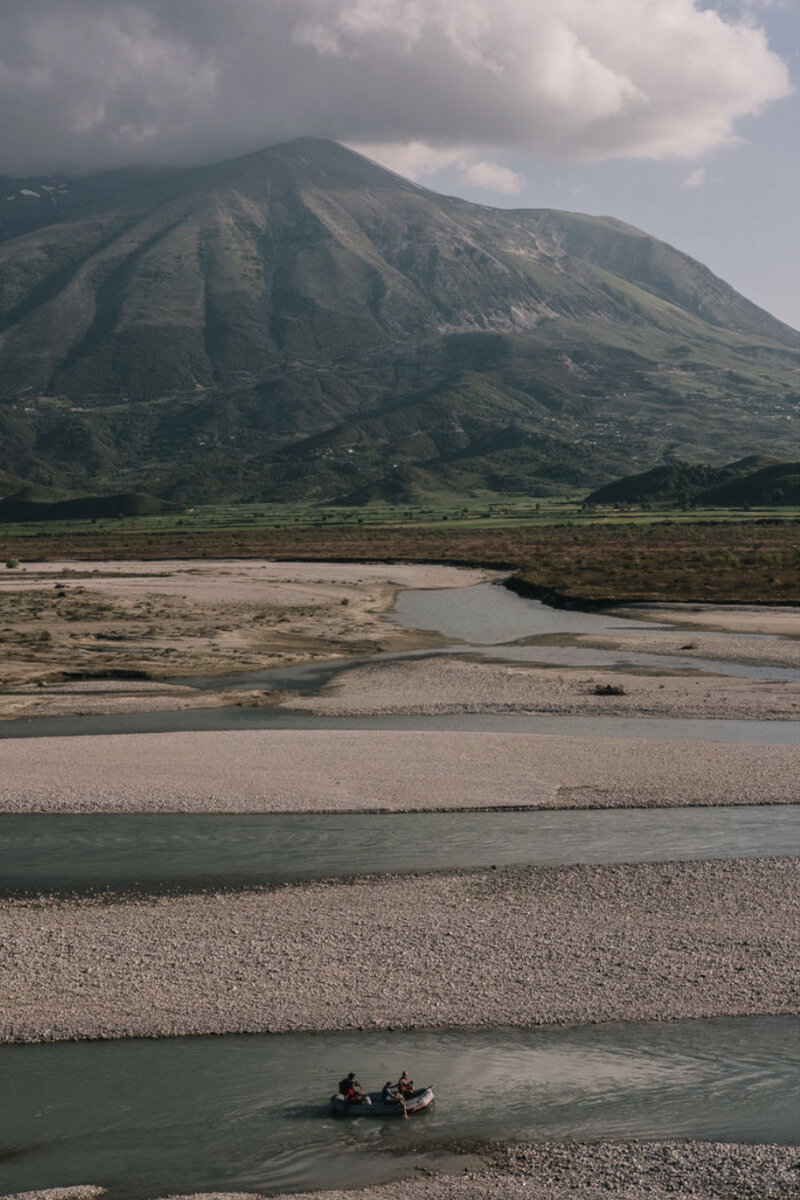Photography Exhibition and Book Presentation ALBANIAN SCAPES
On Saturday, March 18, 2023, at 11:00 a.m., in the premises of the TATI SPACE Photography Center, is open the Exhibition "ALBANIAN SCAPES - a photographic journey into Albanian Landscape" with photography and prints by Alketa Misja. The photos are part of the photography series ALBANIAN SCAPES, that cover a period of time 2008 to 2022. A part of the prints are published in the book ALBANIAN SCAPES by the author. While another part are presented for the first time in this exhibition. The exhibition will remain open until April 22, International Earth Day.
On Saturday, March 18, 2023, at 11:00 a.m., in the premises of the TATI SPACE Photography Center, is open the Exhibition "ALBANIAN SCAPES - a photographic journey into Albanian Landscape" with photography and prints by Alketa Misja. The photos are part of the photography series ALBANIAN SCAPES, that cover a period of time 2008 to 2022. A part of the prints are published in the book ALBANIAN SCAPES by the author. While another part are presented for the first time in this exhibition. The exhibition will remain open until April 22, International Earth Day.
Project Description
Albanian Scapes is a photographic series about the Albanian landscape, as the title suggests (Albanian + Landscapes).During these last 25 years, we have witnessed the changes that the Albanian landscape has undergone from rapid urbanization, the territory’s use for commercial purposes, and the exploitation of natural resources with no protection criteria. Photography has helped me document this transformation. For this reason, the photos serve as a moment frozen in time of a landscape that will never be the same. Alternatively, Albanian Scapes can be viewed as a meditation on the current state of the Albanian landscape, constantly shifting, much like the interests of the society of which nature is a part. The album is organized like a photographic journey from north to south, traversing the natural riches of Albania and its contrasts. On one end, we see the nature of Theth and Orosh, which remains untouched by mass tourism, and on the opposite one, the artificial landscape of Tirana, which is being transformed by mass urbanization daily.”
In the introduction to the book "Albanian Scapes", arch. Andi Papastefani writes- “The pleasing sights in this aesthetic edition captivate both the eye and mind. Alketa has been able to draw attention to the complexity, contrast, and problems of this country with which nature has been so generous. She portrays all of these juxtapositions in her photographic narrative about Albania as an architect and photographer, using iconic images that urge people to think and consider the true value of the landscape, culture, and history, as well as what we have lost”
While Falma Fshazi writes- “In the Albania of Albanian Scapes, we recall the cities that are permanently changing and increasingly occupied with tall buildings, bringing with it as many stories yet to be told. Many overlapping stories, managing to retain their individuality, much like the Albanian urban landscape whose transformation has continued with intensity toward the hills, plains and river banks, often entering where it does not belong, but unable to fundamentally alter the Mediterranean nature, the hospitable nature of the locals, or erase the traces of time. In Alketa's photography, the natural landscape of Albania, from Theth to Lukovë, is a watery world, one made up of fresh, salty, ice-cold, or healing and warm waters that, when not adorning the rocky peaks, twist and turn through the plains protected by vertical mountains. Blue waters and white waters, shallow waters and deep waters, an ecological heritage, as much as the living memory of things, species and people who come to us through photographs, in a search for meaning for Albanians, Europeans and the worlds of tomorrow.”
Available on Amazon and Blurb Bookstore
Amazon Store: ISBN Hardcover, ImageWrap: 9798881301958
Blurb Bookstore: ISBN Hardcover, ImageWrap: 9798881287856
Blurb Bookstore: ISBN Hardcover, Dust Jacket: 9798210988904
Language: English, Albanian
Standard Landscape, 10x8 inch, 25x20cm
100 pages, 87 photos, Premium Lustre Paper
PhotoBook "Albanian Scapes"
The Photobook "Albanian Scapes" is the first publication of Tati Space, with photographs by Alketa Misja and foreword by Andi Papastefani and Falma Fshazi. Now available on Amazon and Blurb Bookstore. A photographic journey into Albanian Landscape as seen from an architect and urban planner. A Landscape in a constant transformation under the pressure of human activities and rapid urbanization. A fragile landscape that will not be the same.
The Photobook "Albanian Scapes" is the first publication of Tati Space, with photographs by Alketa Misja and foreword by Andi Papastefani and Falma Fshazi.
Now available on Amazon and Blurb Bookstore
Amazon Store: ISBN Hardcover, ImageWrap: 9798881301958
Blurb Bookstore: ISBN Hardcover, ImageWrap: 9798881287856
Blurb Bookstore: ISBN Hardcover, Dust Jacket: 9798210988904
Language: English, Albanian
Standard Landscape, 10x8 inch, 25x20cm
100 pages, 87 photos, Premium Lustre Paper
A photographic journey into Albanian Landscape as seen from an architect and urban planner. A Landscape in a constant transformation under the pressure of human activities and rapid urbanization. A fragile landscape that will not be the same. The photos in this book cover a period of time from 2008 to 2022. This is the longest photographic project of Alketa Misja. Other photographic projects from the same author are Artifact Project - Photographing the Industrial Heritage of the Socialist Period and Photographing Modern Architecture in Albania.
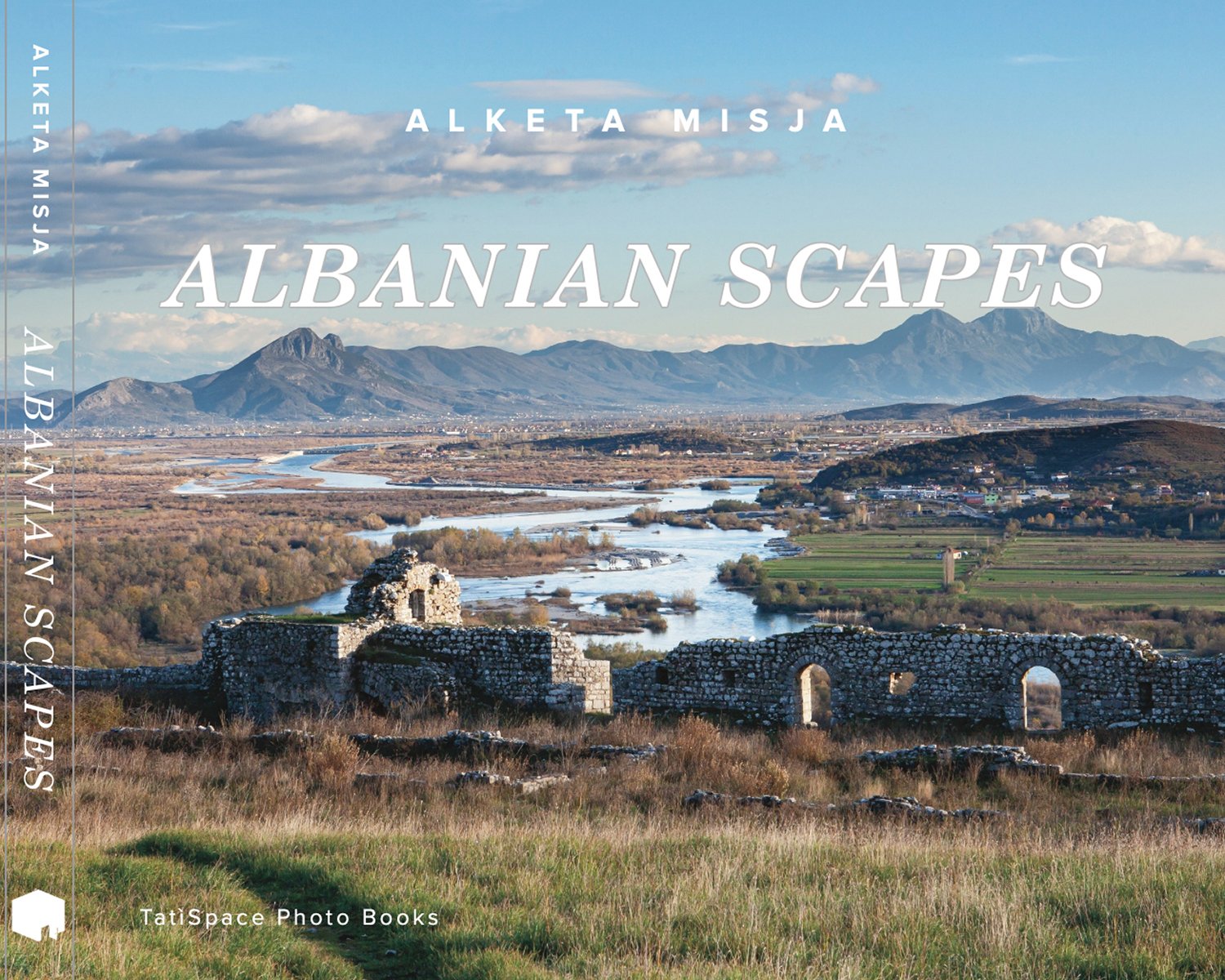
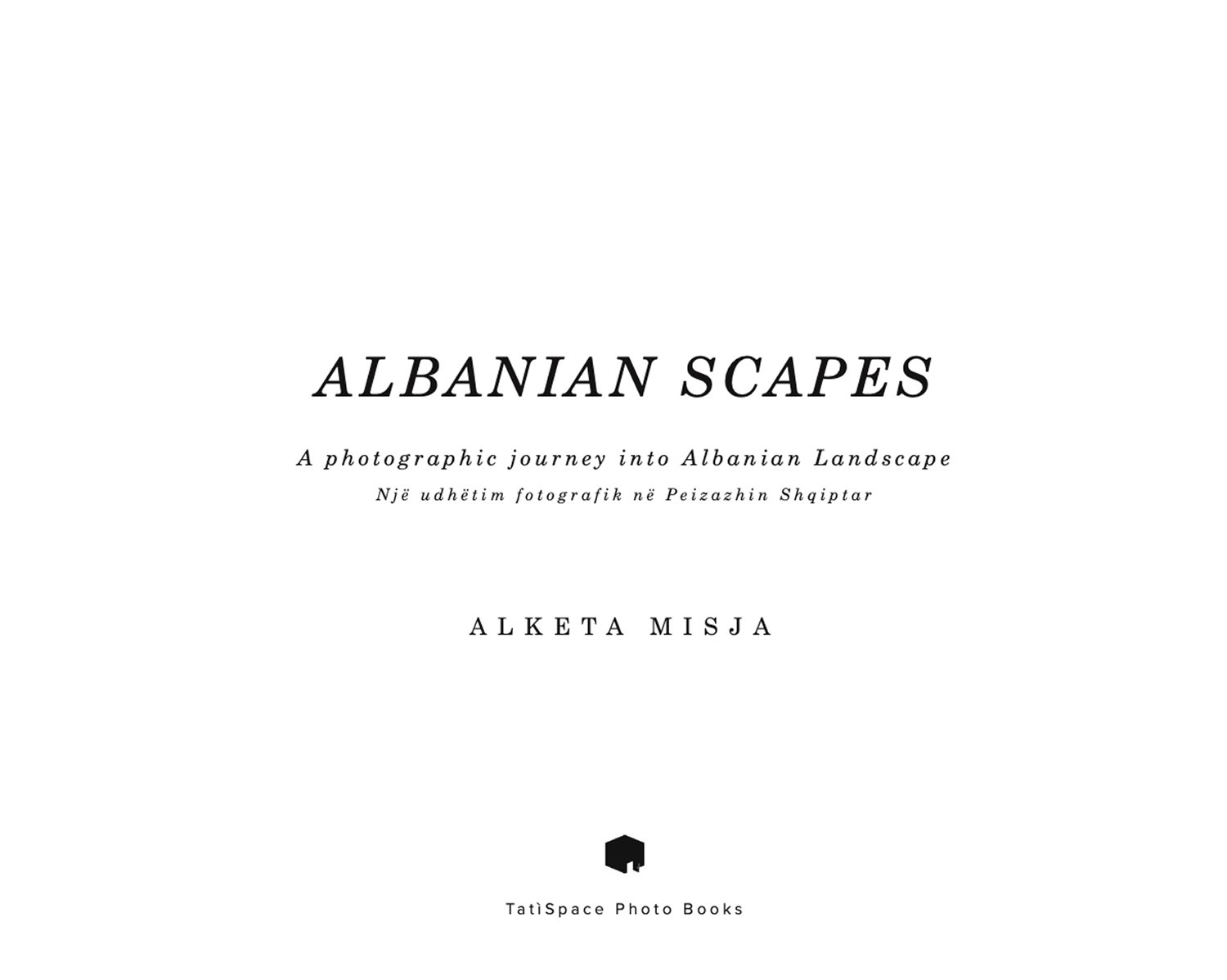
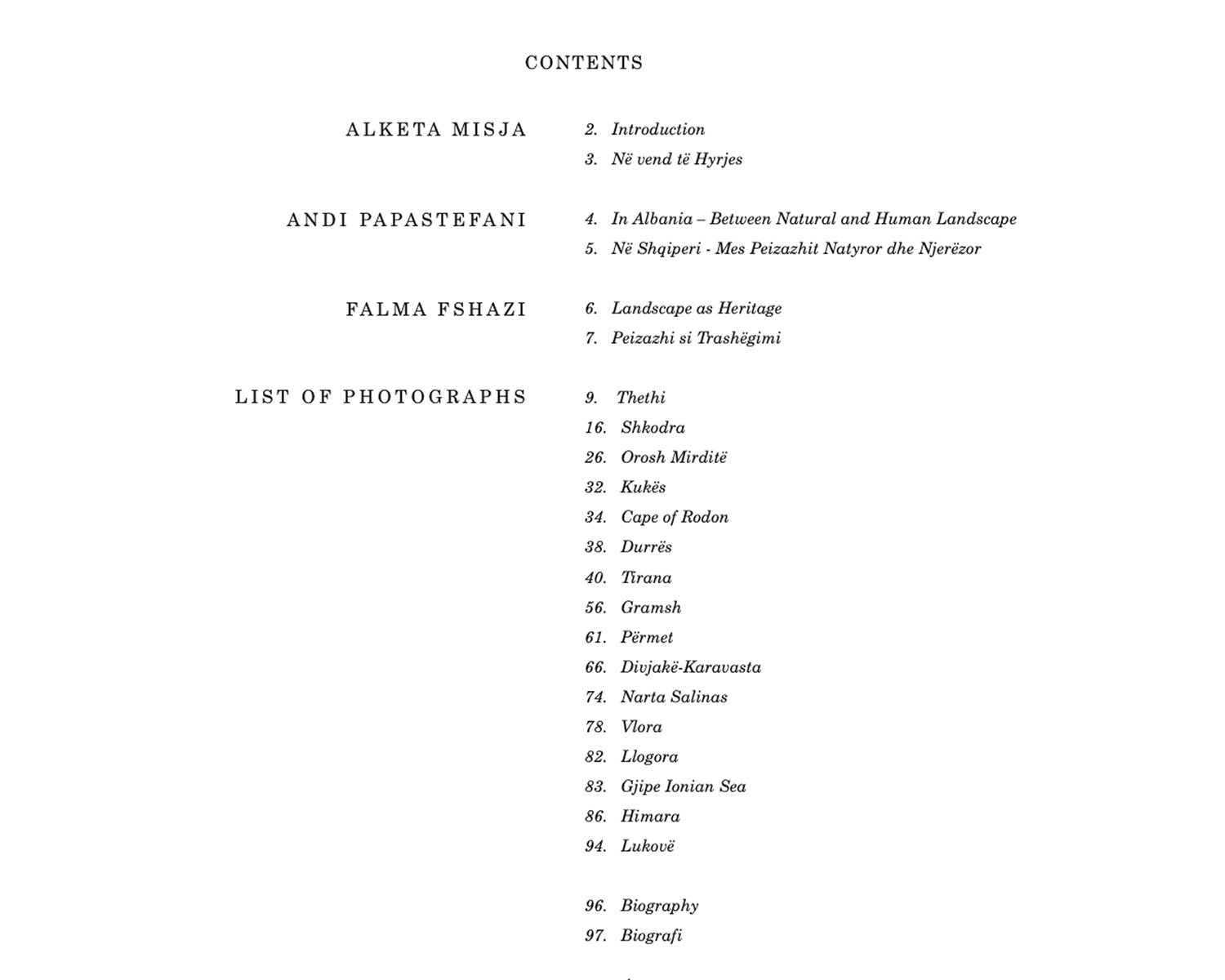
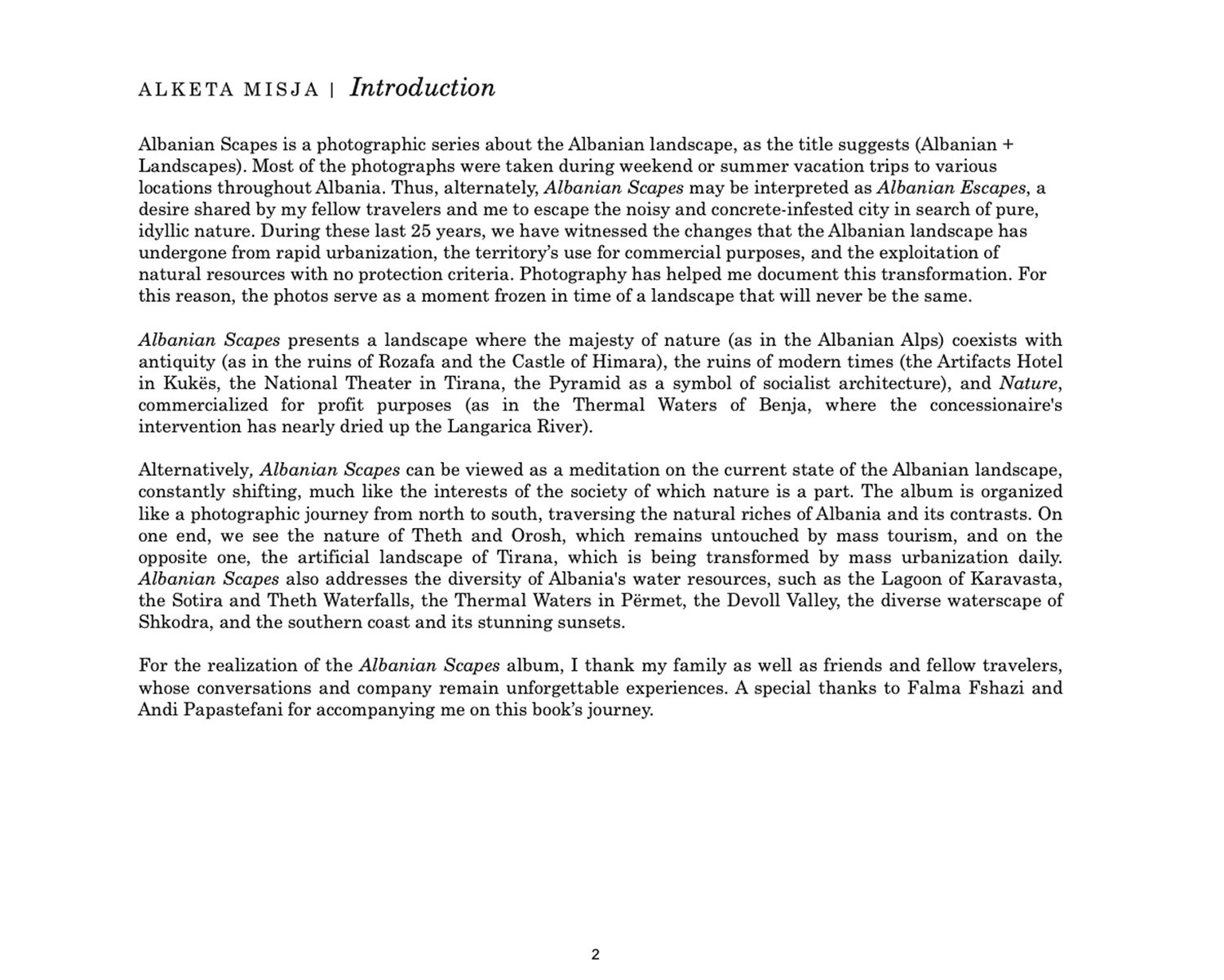
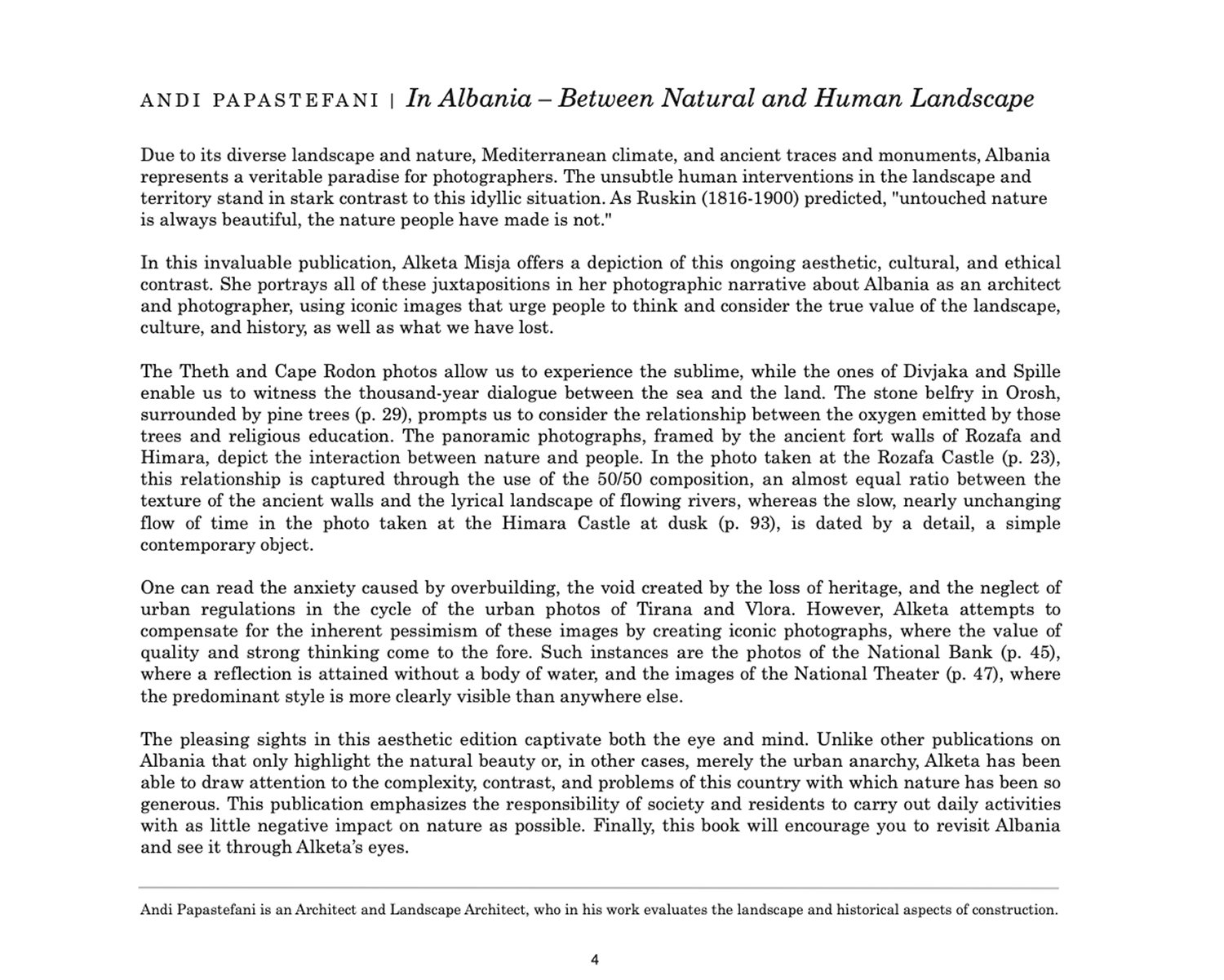
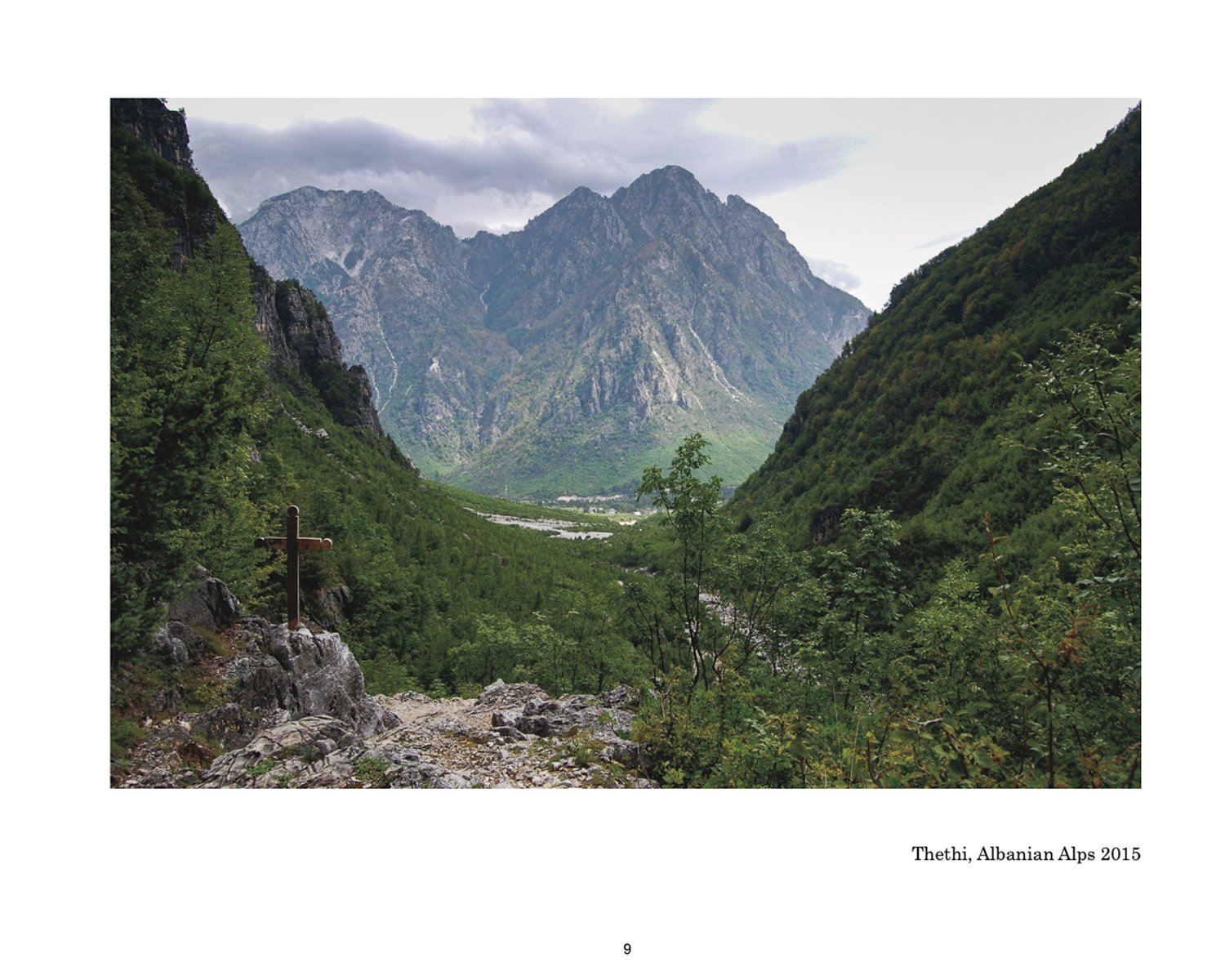
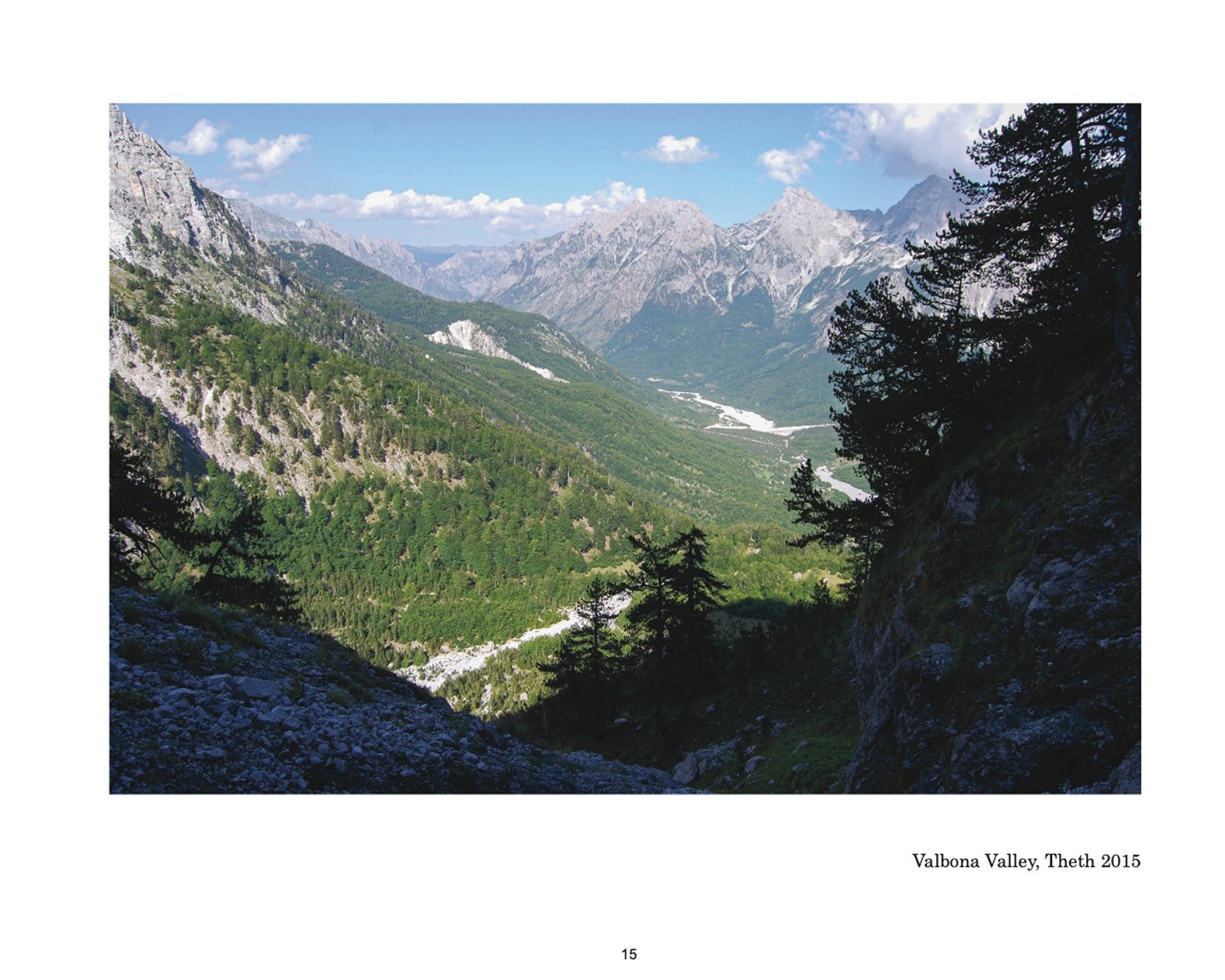
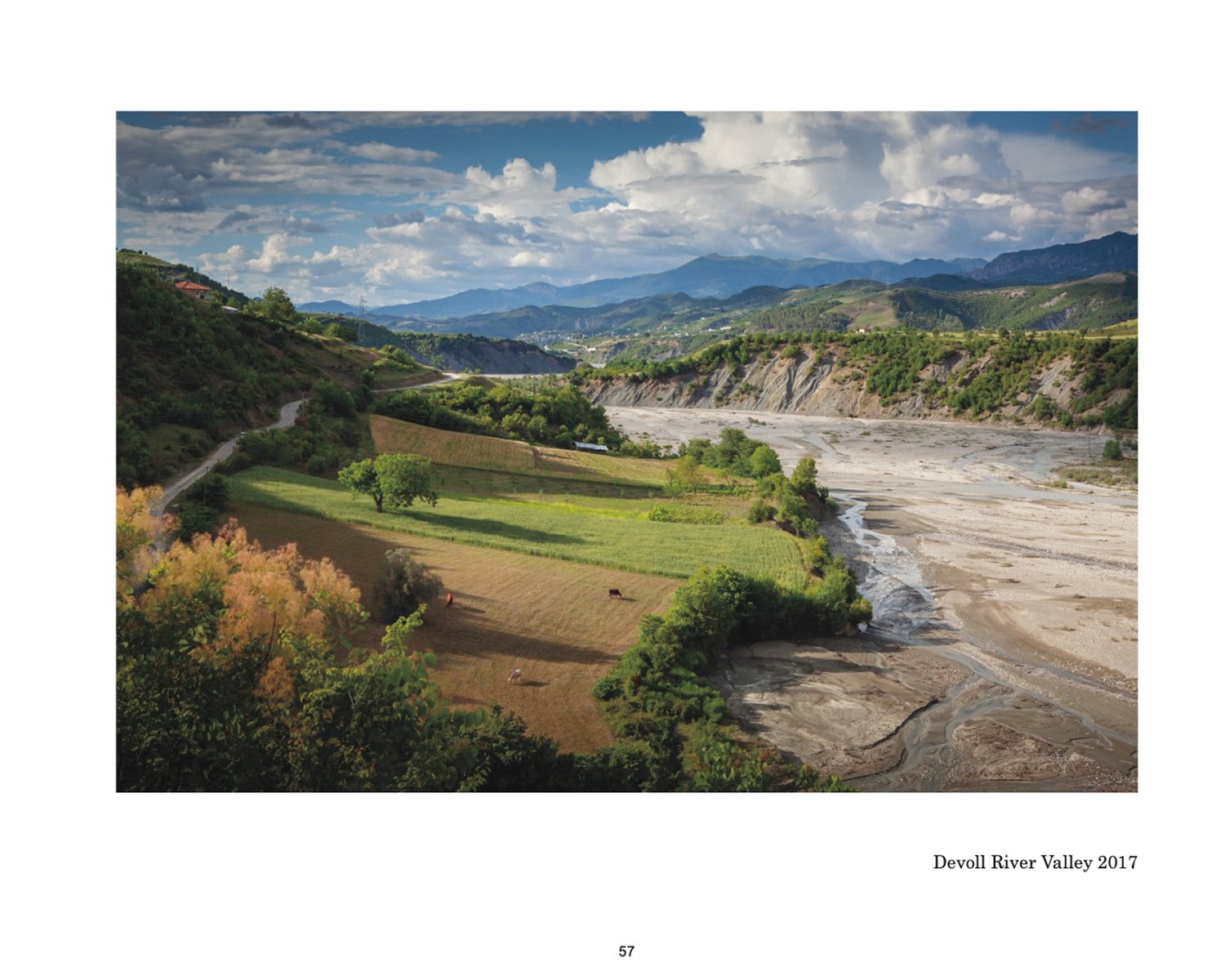
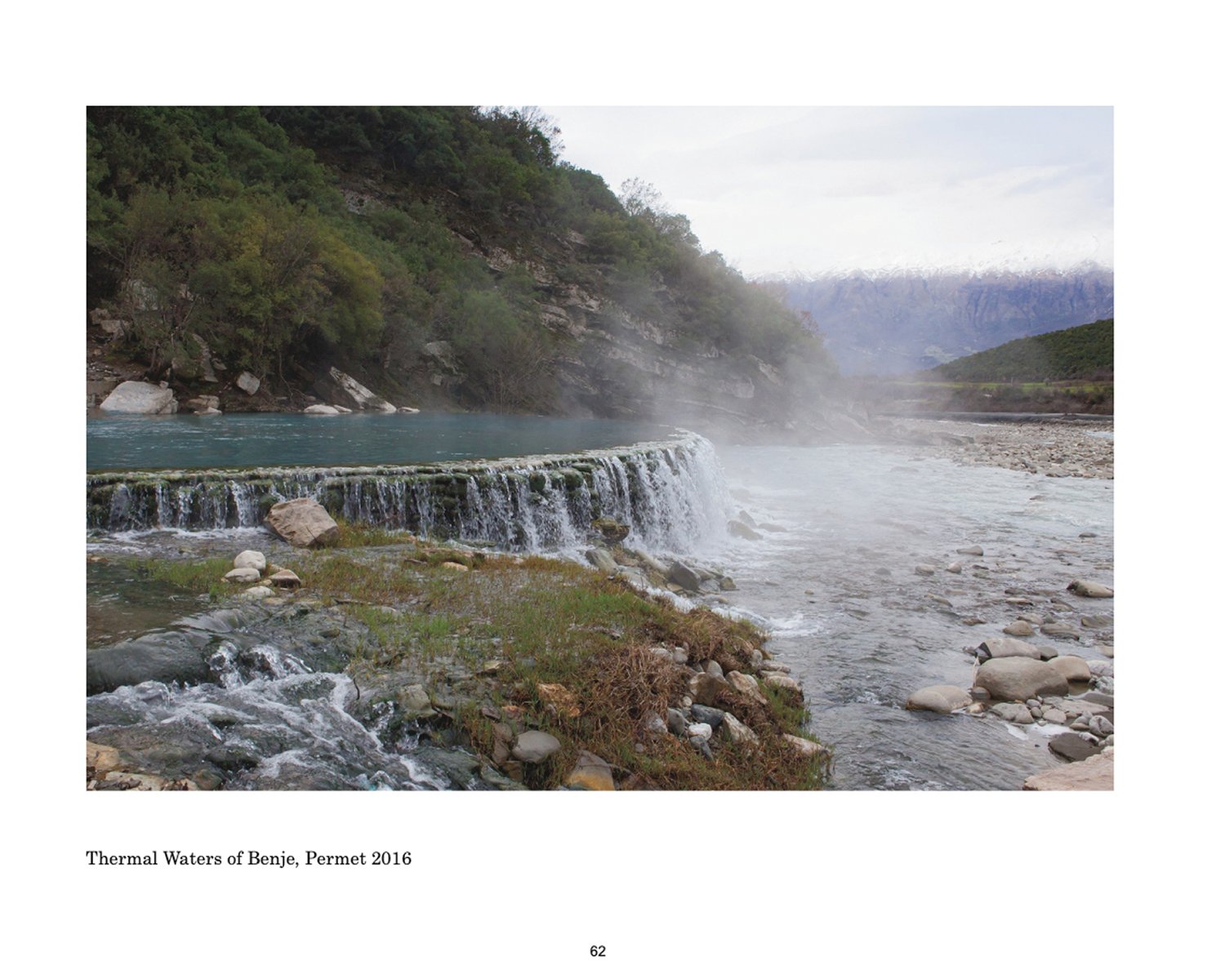
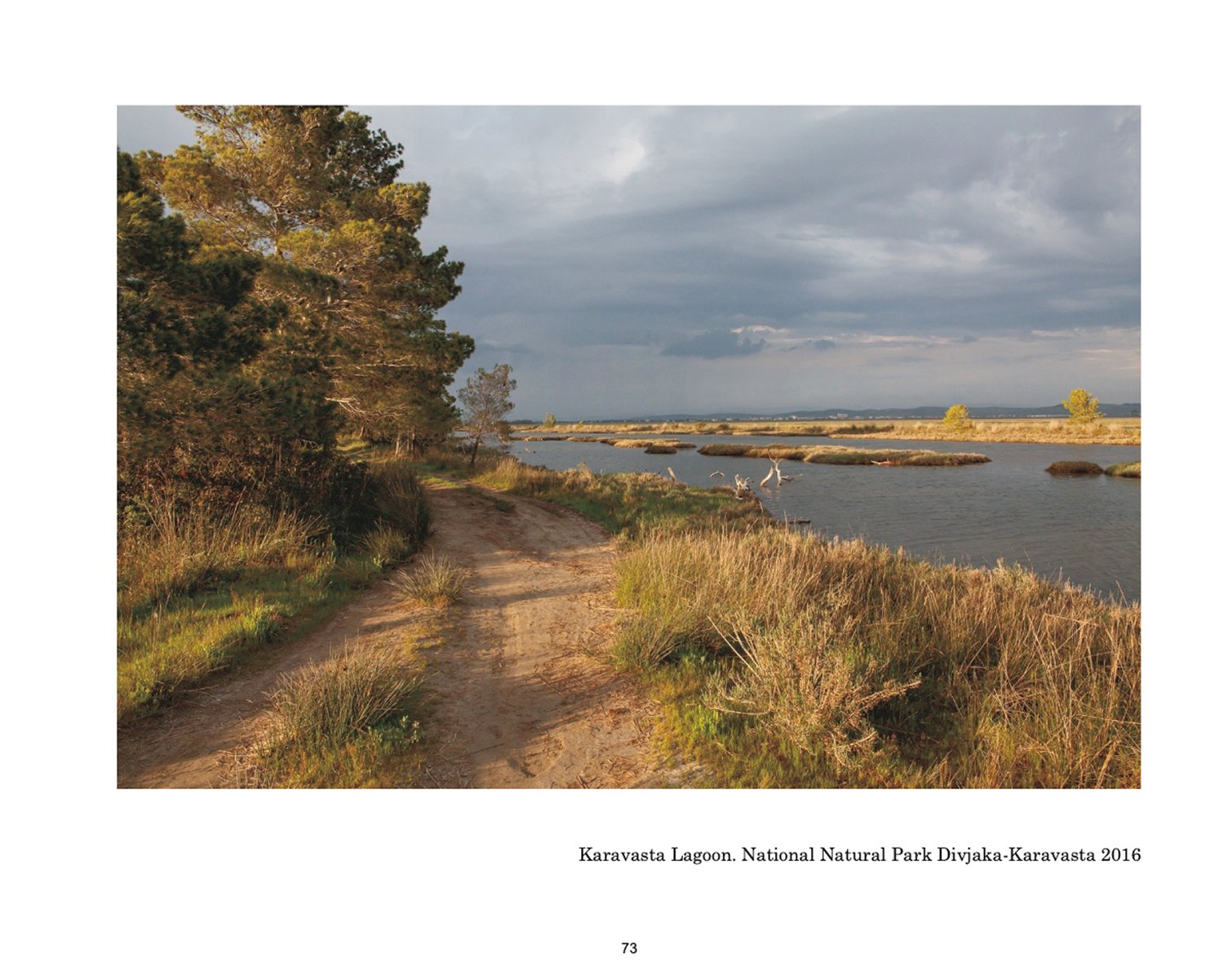
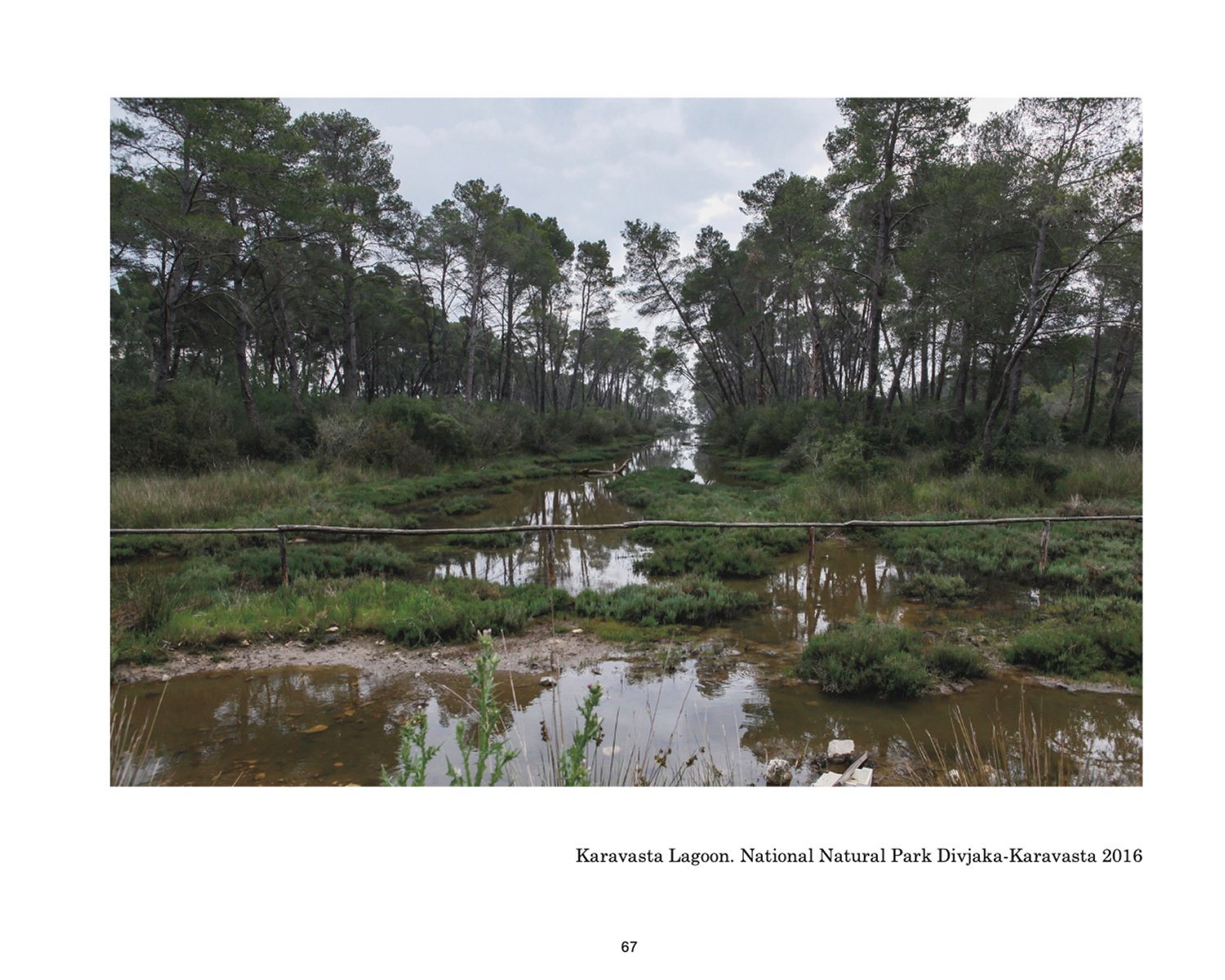
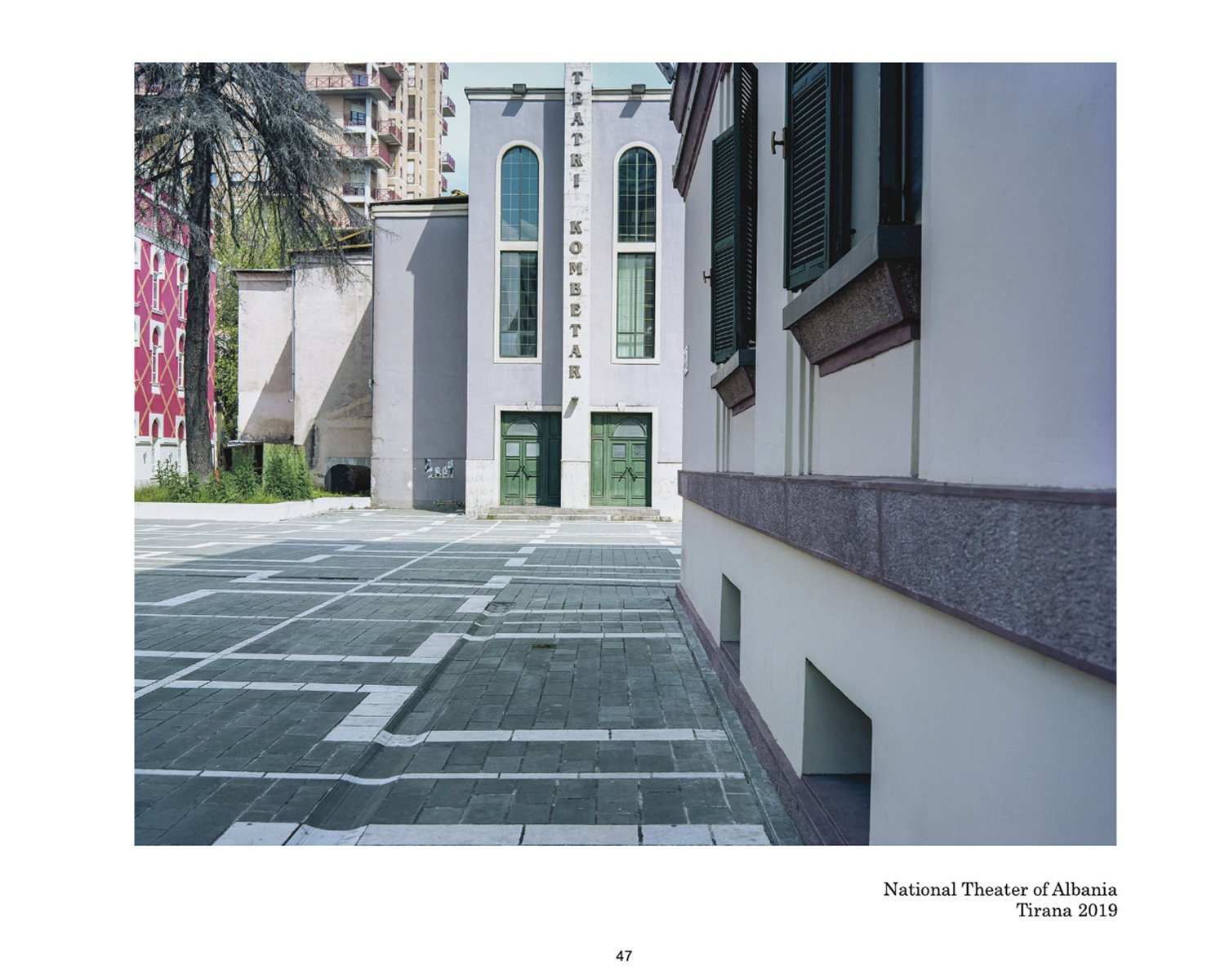
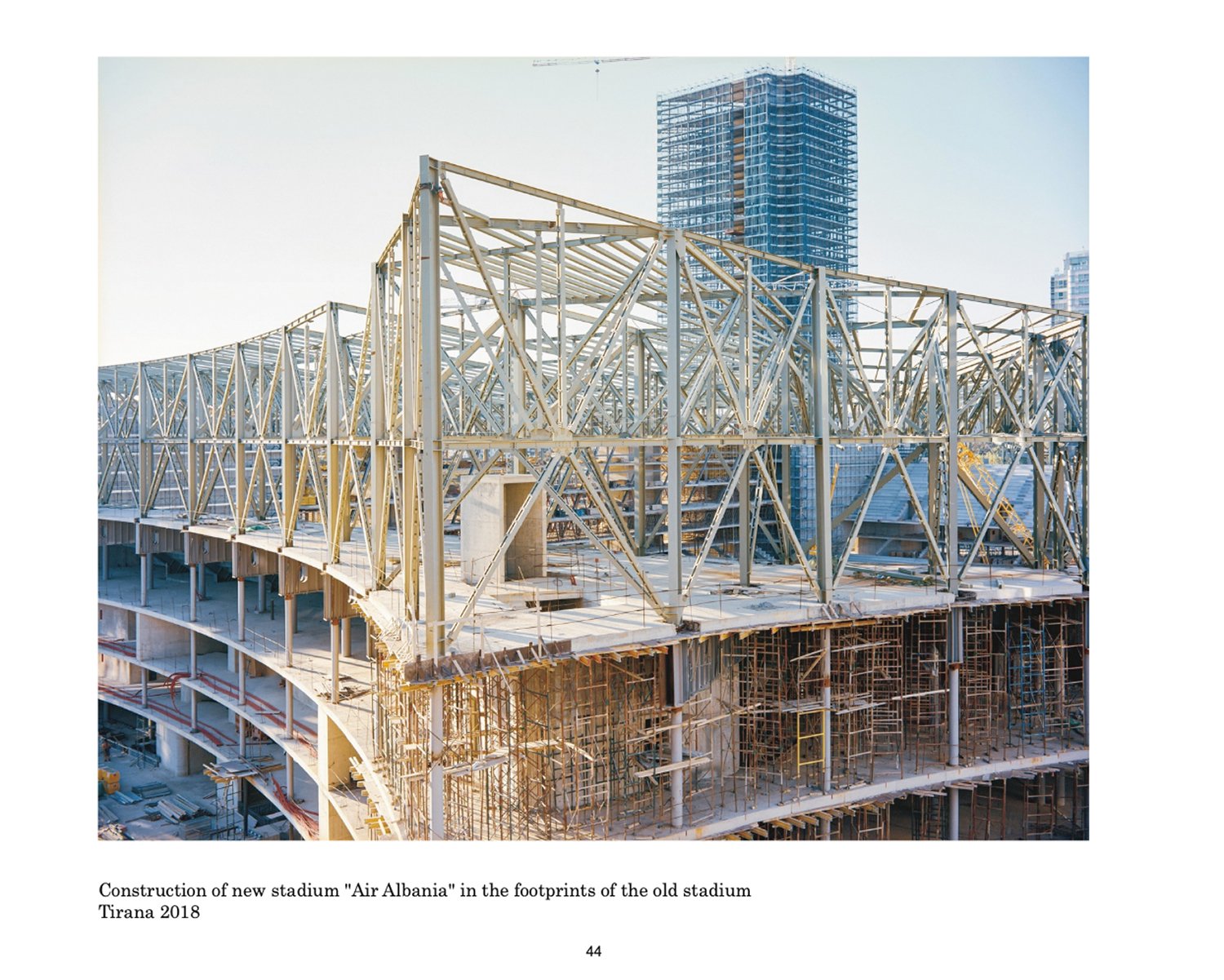
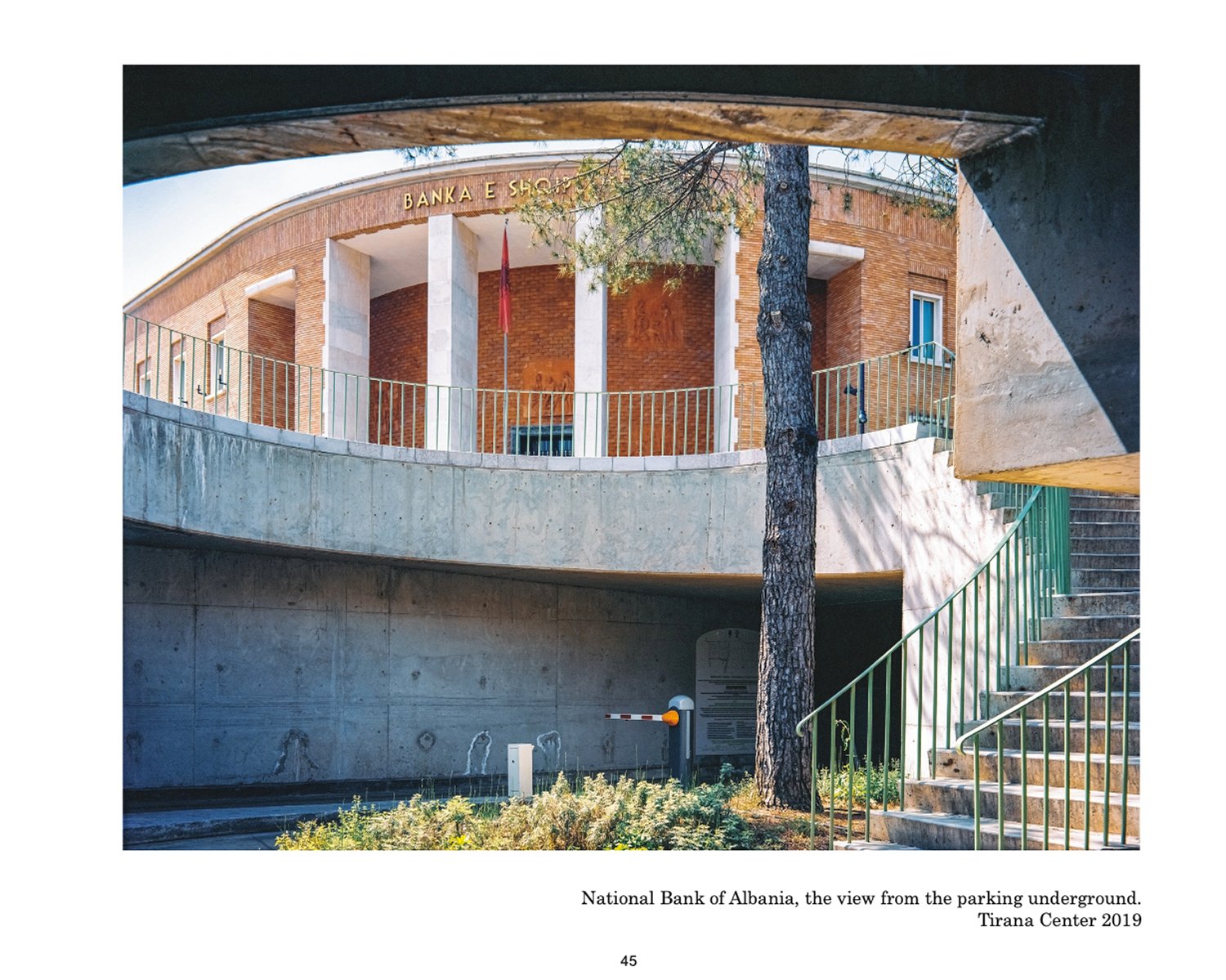
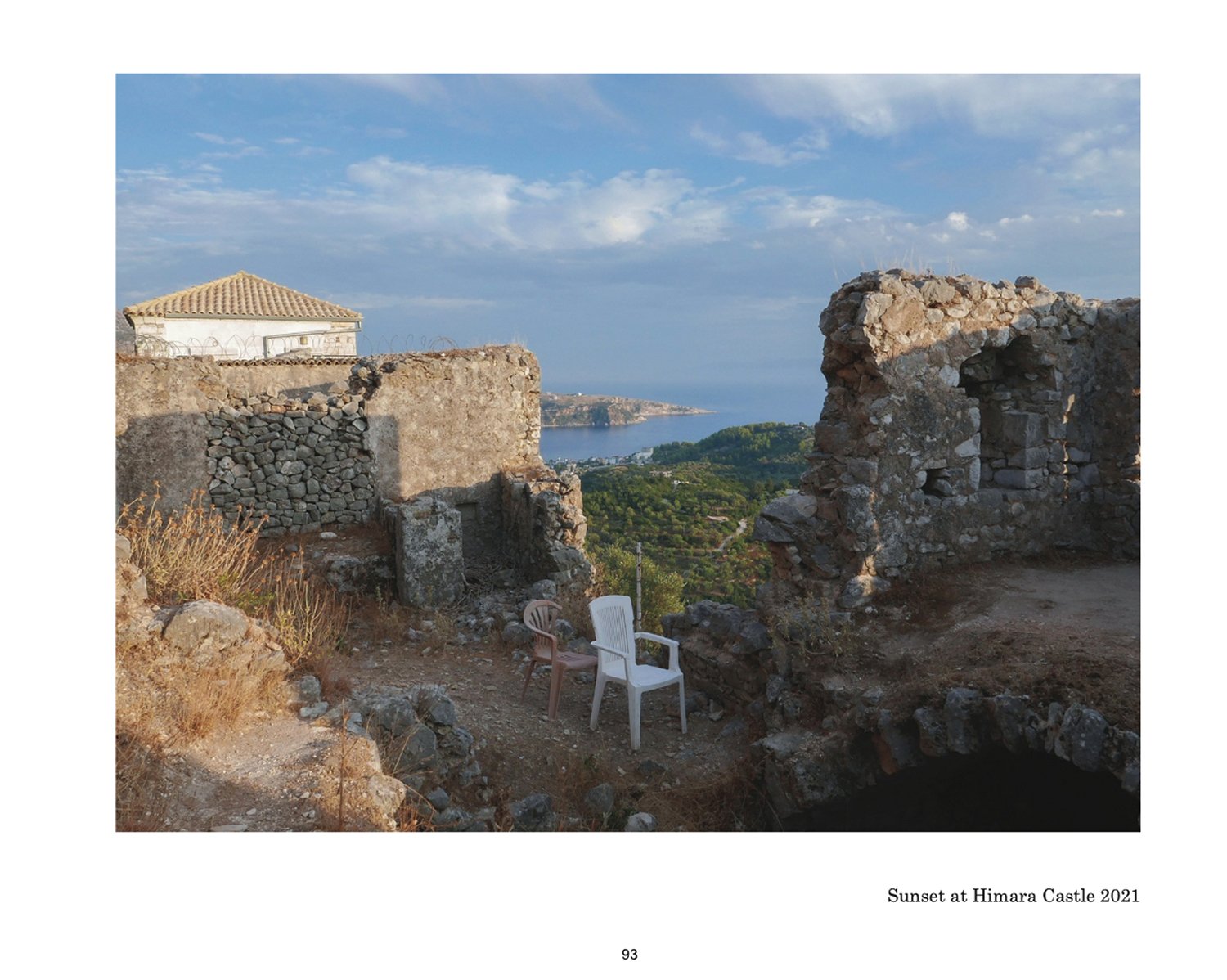
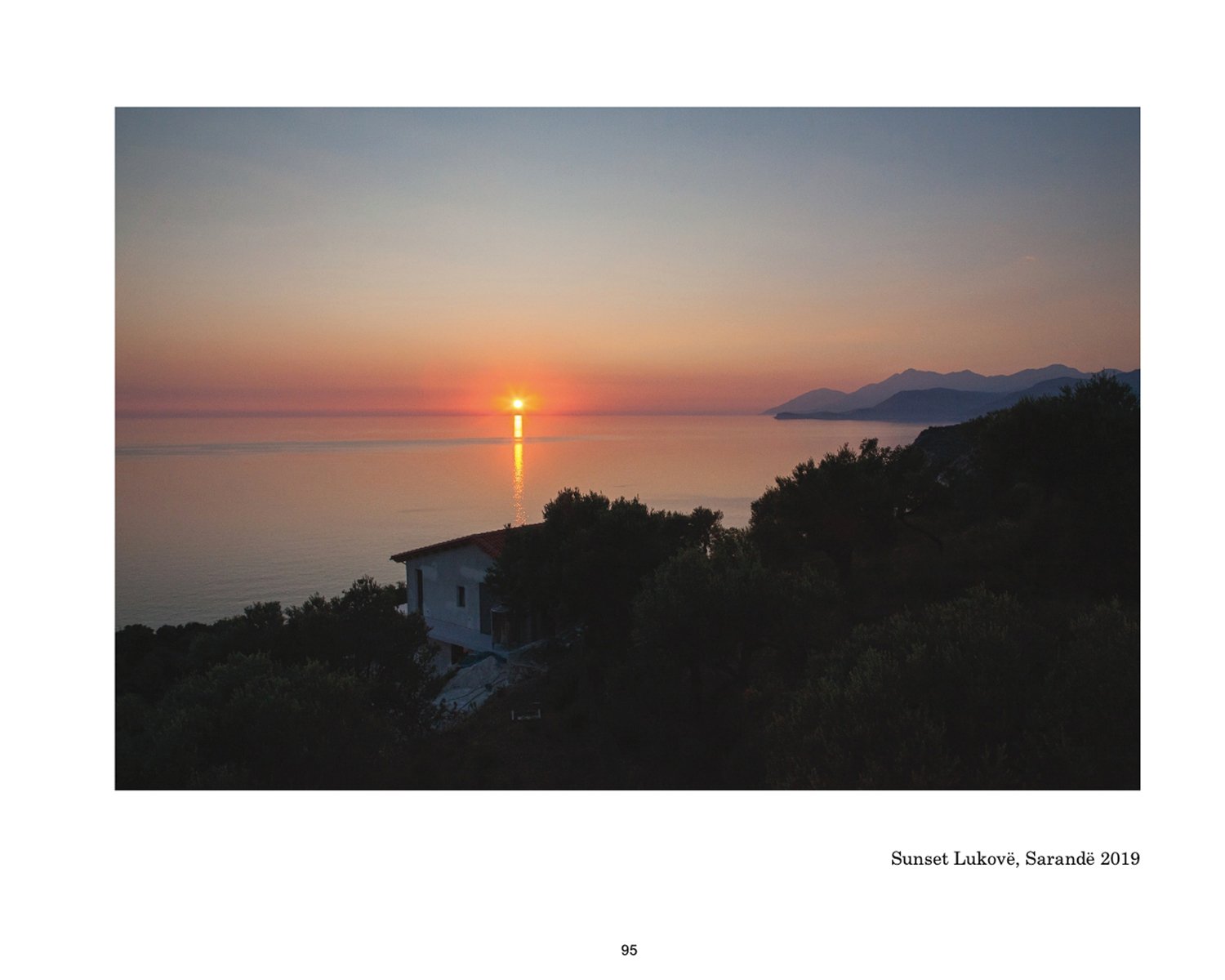
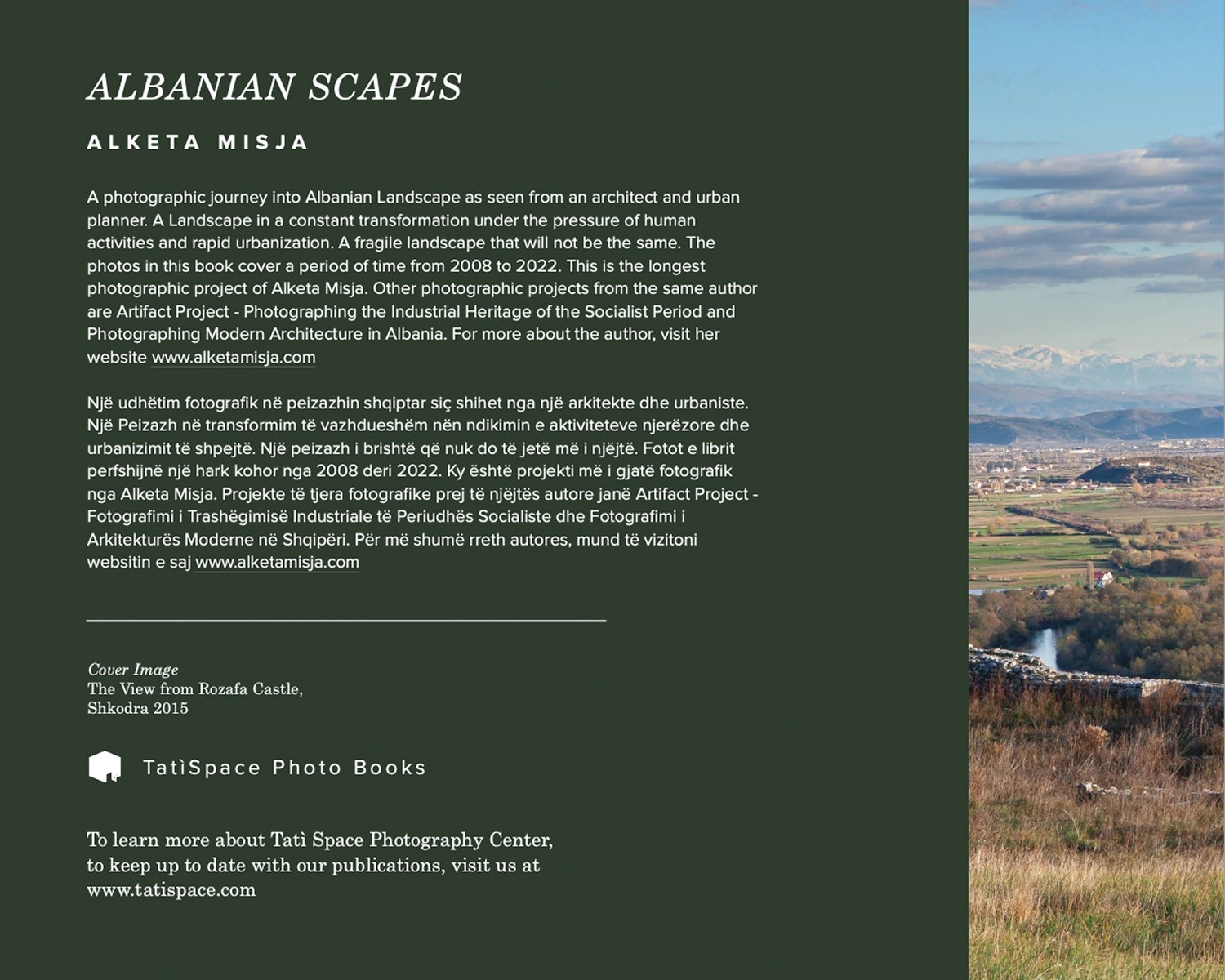
In her preface Landscape as Heritage, Falma Fshazi writes: “Through Alketa Misja's work, the landscape of Albania becomes an album made of hundreds of pages. Each photo is a small booklet of natural history, ecology, or urbanization. All together, the photographs document the Albanian heritage and landscape as heritage.
In the Albania of Albanian Scapes, we recall the cities that are permanently changing and increasingly occupied with tall buildings, bringing with it as many stories yet to be told. Many overlapping stories, managing to retain their individuality, much like the Albanian urban landscape whose transformation has continued with intensity toward the hills, plains and river banks, often entering where it does not belong, but unable to fundamentally alter the Mediterranean nature, the hospitable nature of the locals, or erase the traces of time.”
In his preface In Albania- Between Natural and Human Landscape, Andi Papastefani writes- “In this invaluable publication, Alketa Misja offers a depiction of this ongoing aesthetic, cultural, and ethical contrast. She portrays all of these juxtapositions in her photographic narrative about Albania as an architect and photographer, using iconic images that urge people to think and consider the true value of the landscape, culture, and history, as well as what we have lost.
The pleasing sights in this aesthetic edition captivate both the eye and mind. Unlike other publications on Albania that only highlight the natural beauty or, in other cases, merely the urban anarchy, Alketa has been able to draw attention to the complexity, contrast, and problems of this country with which nature has been so generous. This publication emphasizes the responsibility of society and residents to carry out daily activities with as little negative impact on nature as possible.”
Rozafa Shpuza
Rozafa Shpuza is a poet and a photographer, a uniqueness that creates a connection between two arts. She writes poetry in Gheg dialect, but she is as well productive in the field of photography, mainly in the genre of urban and street photography. Her photos are mostly shot in the streets of her hometown, Shkodra.
Rozafa Shpuza, Selfportrait
Rozafa Shpuza
(Albania 1969-)
Rozafa Shpuza is a poet and a photographer, a uniqueness that creates a connection between two arts. She writes poetry in Gheg dialect, but she is as well productive in the field of photography, mainly in the genre of urban and street photography. Her photos are mostly shot in the streets of her hometown, Shkodra. The subjects of her photography are urban moments of city scenes, captured in an abstract way, often surreal, with humor and well composed. The second photo gallery, perhaps the most important, is the portraits of the city dwellers, spontaneously shot in the public spaces, while performing activities or meditating in their tranquillity, captured unaware, creating a particular emotional state. What do city characters, silent passers-by, photographed in isolation, think in the midst of the urban chaos? It seems as if each of them is closed in their inner world, immersed in their thoughts and personal worries. In an individualistic society, where everyone thinks for themselves, Rozafa naturally seeks to penetrate the individual and his psychology. A third photo gallery, which I like very much, is the series of self-portraits on the streets of city, shot on sidewalks, shop windows or cafeterias, captured in superposition of different planes, alluding to a complex and confusing world in which the artist and the individual live in the modern city. Rozafa’s photographs, although unique in the Albanian photography scene, are nurtured by a rich international tradition of street photography, created and inspired by the photography of Walker Evans, Garry Winogrand, William Klein, Diane Arbus, Vivian Mayer, and others.
Below you can read a description that Rozafa Shpuza makes of her urban photography, given to TatiSpace. How did the creative process start, what was the beginning and the inspiration?
Rozafa Shpuza: Photography is a long-standing love of mine, which continues to inspire me and be an important part of my daily life. I have been dealing with photography for many years, sometimes more intensely and sometimes more calmly, and I can say without fear that photography has made my life beautiful. I bought my first camera in Denmark when I went to do a specialization course in 1994. The dynamics of that country, the architecture, the people, the different way of conceiving public spaces tempted me to fix all this on my incredibly modest camera. Since then I have not stopped. I photograph on the street because I feel that the characters I capture are real and convey the message of life without frames. Street photography is the most important part of my artistic creativity. I travel a lot because I feel like cities have a lot of surprises for my camera. The last album with street photos is the one I made in Shkodra during the isolation period of the Covid 19 pandemic. An empty city, scared characters in a hurry, closed windows and doors, all these sensations are already fixed in my album "The diary of an anxious season". I have participated in many activities dedicated to photography, in joint and personal exhibitions, at home and abroad, with the good desire to get to know photographer artists and to see where my photography stands compared to their photos. 3 years ago I opened an art gallery in Shkodra, at the old parents' house, with the good desire to promote artists from all over the world.
Urban Moments
© Rozafa Shpuza, Watery
© Rozafa Shpuza, Shkodra News
© Rozafa Shpuza, Shkodra
© Rozafa Shpuza, Kafja e Madhe, Shkodër
© Rozafa Shpuza, Showcase Approach
© Rozafa Shpuza, Selfportrait
© Rozafa Shpuza, Trille Vitrinash
© Rozafa Shpuza, No Smoking
© Rozafa Shpuza, Daily
© Rozafa Shpuza, The Floor F
© Rozafa Shpuza, Bike Repair
© Rozafa Shpuza, Chez Majlo, Gjilan
© Rozafa Shpuza, Pogradec
© Rozafa Shpuza, Nowhere
© Rozafa Shpuza, Communication, Koman Shkoder
© Rozafa Shpuza, Trumnajë bore
© Rozafa Shpuza, My Nowhere
Portraits of Passers-by
© Rozafa Shpuza,
© Rozafa Shpuza
© Rozafa Shpuza, showcase traps
© Rozafa Shpuza, Piano
© Rozafa Shpuza, Daily Time
© Rozafa Shpuza, Taxes that are forgiven
© Rozafa Shpuza, Children
© Rozafa Shpuza, Curiosity
© Rozafa Shpuza, The Walk
© Rozafa Shpuza, Icy Memories
© Rozafa Shpuza, Njomza
© Rozafa Shpuza, from the Series ‘Diary of an anxious season’
© Rozafa Shpuza, Time to pray, Shkodër
© Rozafa Shpuza, from the Series ‘Diary of an anxious season’
© Rozafa Shpuza, from the Series ‘Diary of an anxious season’
© Rozafa Shpuza
© Rozafa Shpuza, Wanderer
© Rozafa Shpuza, The Selector, from the Series ‘The Diary of an anxious season”
© Rozafa Shpuza, Lunch
© Rozafa Shpuza
© Rozafa Shpuza, Plisa
© Rozafa Shpuza, At ‘Dugajt e Reja’, Shkodër
© Rozafa Shpuza, the Neighbor
Color Photography
© Rozafa Shpuza, Salty twilight
© Rozafa Shpuza, Communication
© Rozafa Shpuza, Once Upon a Time
You can see more of Rozafa Shpuza photos, in her social media, Facebook, Instagram and Galleria Oda.
Nick St.Oegger
Nick St.Oegger is a documentary photographer whose work explores the relationship between people and places. A quiet American, as he calls himself in his social media, he has been working in Western Balkans since 2013. In Albania, he has a large body of work about a very sensitive issue: the construction of hydropower projects in the rivers of the region known as the “Blue Heart of Europe”, and the impact they have on the rich biodiversity and the unique culture of inhabitants. Here we present the interview that Nick St.Oegger has given to TatìSpace.
Nick St.Oegger is a documentary photographer whose work explores the relationship between people and places. A quiet American, as he calls himself in his social media, he has been working in Western Balkans since 2013. In Albania, he has a large body of work about a very sensitive issue: the construction of hydropower projects in the rivers of the region known as the “Blue Heart of Europe”, and the impact they have on the rich biodiversity and the unique culture of inhabitants.
He has been working for different clients including: Patagonia, Vice, Reuters, Le Monde, Libération, Polityka, De Standaard, Nieuwe Revu, Huck Magazine, Caritas Albania, The Calvert Journal, Suitcase Magazine, Point.51, Trip Advisor, Kosovo 2.0, Riverwatch, C41 Magazine, and Culture Trip. He has exhibited his work and published a book on Vjosa River. From one year now, he lives in Albania. I am very happy that he accepted to give an interview to TatiSpace and share his work with our readers. Below is the interview.
TatìSpace: Hello Mr.Nick! First of all, thank you very much for accepting the invitation to be interviewed and sharing your work with us. Can you please tell us more about yourself? Do you consider yourself a travel or a reporter/ documentary photographer? How do you define your photography? How did the idea or interest to photograph in Albania come to you?
Nick St.Oegger:I grew up in California, but have been living and working around Europe for about 8 years now, mostly here in the Balkans, but also in Ireland and the UK. When I was growing up, I thought I would become a lawyer and this was how I prepared my education and what I was trying to focus on. However, the last year at university I had a bit of a crisis where I realized this wasn’t what I wanted to do. I was interested in photography, but it had always been just a hobby, I hadn’t thought about it as a career option until I discovered the work of some photojournalists who worked in the Balkans in the 1990s, in Bosnia, Kosovo and here in Albania. I was very moved by this work, and the idea of using images to tell a story, to raise awareness about different issues facing individuals and communities. So this is how I started out in this field, this was the moment I knew with every bone in my body that I wanted to be a visual storyteller. I do consider myself a documentary photographer, I am always trying to communicate a story or shed light on a particular issue, and for me photographs are the way that I do this, though writing is also important to my work.
I first came to Albania in 2013, on my first trip to the Balkans. I didn’t know anything about Albania before, and I was mainly interested in seeing the countries of former Yugoslavia. I saw Albania on the map and asked some people about it, everyone had very negative responses like “Oh you shouldn’t go there because it’s run by the mafia” or “It’s dangerous, you’ll get kidnapped” or “Why would you go to Albania? There’s nothing to see!”
I thought about these things as I was planning my trip, and I intended to avoid Albania. I arrived in Istanbul, made my way to Athens where I booked a flight to Venice and I would spend some time afterwards on the coast of Croatia. But the morning I was meant to leave Greece, I woke up and the very first thought which came to me was “Go to Albania.” It’s hard to explain, it was like some sort of vision, or fate. So I missed my flight, instead, I got on the next bus I could find to Albania and the rest is history. It was really a life changing decision, that first trip to Albania: I met amazing people, I saw how beautiful and unique this country is but how little the outside world knows or thinks about it. So it was that trip that I decided to focus my attention on Albania and the Balkans, because it’s a region that many people simply don’t understand, even in Europe.
TatìSpace: Here in Albania, you have a large body of work that includes a vast geographical area (from North to South), and a variety of themes (from bunkers to rivers to the Albanian Alps). From these, I can identify two main projects that are very sensitive to the Albanian public interest: “The Lament of the Mountains” and “Kuçedra”. What started out the idea to work on these projects? Was it commissioned or was it a personal project?
Nick St.Oegger: Yes, both these projects are long-term personal projects that I started on my own and then received further support for. Both of these projects started in a rather organic way. When I first came to Albania, I remember taking the bus from Gjirokastër to Tirana, and passing the Vjosa at Tepelenë. I remember the colour of the water; it was like nothing I had seen before. Several years later I was reading a magazine back in the US and I came across a short article about the Vjosa, how it was one of the last free flowing rivers in Europe, but that the government was planning to build dams on it. I realized this was the river I had seen on my first trip, and I felt a strong desire to return, to document the river, the landscapes, the people along its course. Again, it was this sense of fate, I think. In working on the project I now feel this very strong connection to the Vjosa, and whenever I return it feels like visiting an old friend.
Similarly, “Lament of the Mountains” was produced several years later, after I met an anthropologist who was working in the Kelmend region and she told me about the situation of the rivers there; that they are also building these small hydropower dams. She told me about the culture in the valley, how people are still so connected to the land, how they move with their sheep to the high pastures in the summer. I felt like this was another story I had to tell, because for me the mountains are such an important part of Albania, as well as this very strong rural culture and connection to the land.
TatìSpace: In both projects there is an interconnection between the general view (environmental, political, economical) and the personal view (the impact that the projects have on people’s lives). This gives them an intricate beauty. You skip from landscape photography of large panoramas to close up portraits of mountaineers and peasants living near Vjosa. Have you found difficulty approaching this kind of photography? Can you share an episode that impressed you in particular, for example meeting with villagers or authorities? Also, did you have any problems or incidents with groups or individuals that supported the dam projects?
Nick St.Oegger:Yes, that’s right, and I think it is precisely this interconnection that is so unique and important in Albania. Outside Tirana, there are still many places in the country that are very rural, where people are still living rather traditional lives, working with the land. Yes, there are negatives that come from this life, such as poverty and other problems, but I think the way that many people still live with the land in Albania is unique, and people take pride in this work, they feel a strong connection to their land and the history behind it. So for me, especially with these two projects, it is very important to show the people in context of the land, to show that it is not just one or the other that is being threatened, it is both, because of the strong interconnection between environment and people in Albania. And this connection is exactly what is being threatened by so many proposals, whether it’s by the government, or foreign investors.
It can be difficult to approach this kind of photography. I spend a lot of time trying to work in small communities, to gain people’s trust, which is hard to do in Albania. I think there is a lot of mistrust, because of the history with communism, but also the recent history. People are used to foreign journalists coming, they take some photos for a few days, and then they leave. I have always tried to build stronger relationships with my subjects, to try to get to know them as humans first. I always try to return when I can, to give them prints of some of the photos I took of them. Another important aspect for me has been learning the Albanian language, which is difficult, but it has opened up so many doors. I think because the language is so important to people here, they trust me more when they see I am trying to speak to them in their own language.
Probably one of the most impressive experiences was when I stayed with the shepherds in Kelmend during the summer. We migrated with a herd of 200 sheep, I walked 40km with them to their shelter near Lepushë. It was beautiful to spend time with them there, to see the way they care for the sheep and their families, to see the way the children help with everything and how much knowledge they have about the environment, the weather, how they take care of themselves and fix things. Before this, the ‘malësorë’ were a bit of a mystery to me. I only heard some stories and stereotypes, so it was an amazing experience to see the reality of their lives and I was very honored that they gave me their trust and allowed me to stay with them and photograph.
TatiSpace: Your “Kucedra” project has been exhibited and published in a book. Can you tell us something more about it? How do you find this aspect of photography, when projects communicate to the public? Did the project have an impact?
Nick St.Oegger:That’s right, I published “Kuçedra” as a book first in 2018 and I have exhibited the work several times as well. For me it was very important that these photos go into the world in a physical way, not just on people’s screens. Publishing the book allowed me to raise awareness about the Vjosa, and the issues related to hydropower development on an international scale. I was lucky to partner with Patagonia and Save the Blue Heart of Europe campaign, so the book was distributed around the world, including to members of the European Parliament who have been trying to convince the Albanian government to save Vjosa.
Exhibiting the work has also been important, especially the exhibitions in Greece and Albania. For the Greeks it was a chance for them to see something of Albania, which is so close yet so far (a place many of them wouldn’t consider visiting). I had several people look at the photos and tell me “You know, these places could also be here. We are not so different” and this was very nice to hear, given some of the historical conflicts and tensions that exist between Greece and Albania.
It was so important for me to exhibit this work in Albania as well, so that everyday people can see the beauty of their own country in a way that they might not have previously done. It was really a nice experience to speak with people at the exhibition and to see that they have some connection to my work, to see how it makes them consider their country in a different way. That was very important to me, because I want my work to speak to Albanians. I don’t want it to be just for foreigners to see this “exotic” location. I hope that my work also connects with regular Albanians as well.
TatìSpace: Can you share something more about your next projects or exhibitions (if you prefer)?
Nick St.Oegger: I am planning to start writing another book about these last 8 years working in Albania. It will be a mixture of photos and personal stories from my time in the country. It’s something I’ve been wanting to do for some time. I also will have some more work related to hydropower, documenting areas where rivers have been destroyed by dams. So in a way I am still continuing with this work that I started years ago with “Kuçedra”, and it’s good to continue following this issue with hydropower and the effects it has on communities and the environment in Albania.
I hope to also continue with exhibitions, which unfortunately hasn’t been possible during the pandemic, but maybe as the situation improves it would be great to show more of my work both in Albania and abroad.
TatìSpace: Thank you very much for the interview and hope to see more of your work about Albania.
An overview to the main projects of Nick St.Oegger in Albania, “Kuçedra”and “The Lament of the Mountains”. More can be found in his website: www.stoeggerphotography.com
In “Kucedra” series, Nick St.Oegger explores thelast wild river of Europe: Vjosa (in Albania), and the proposed hydropower projects along its route that will alter the flow of the river, harming the rich and unique biodiversity within it and displacing thousands of people due to the creation of reservoirs. A key source of life for numerous endangered plant and animal species – many of which have disappeared from the rest of Europe’s rivers –Vjosa also holds cultural and economic significance for the rural communities along its banks, which once played an important role in Albania’s agricultural industry. Through landscapes, portraits and interior details, he portrays the environment of Vjosa in its natural state, as it faces the threat of being changed forever.
The Vjosa river near the Greek-Albanian border. Despite willingness to declare the river a national park in 2015, the Albanian government issued a contract to build a new hydropower dam at Poçem. The European Parliament has demanded the government to stop the plans for hydropower on the Vjosa, noting the environment damage it would cause. Copyright © Nick St.Oegger
Interior Bënça. Locals in the village have protested a hydropower that will divert water from nearby Bënça tributary, which feeds into Vjosa. The loss of water from this river could have severe negative consequences for the agriculture. Copyright © Nick St.Oegger
Ronja, a retired teacher in Kuta. Like many in the village, she does not hold title documents for her land, due to the administrative chaos that followed the fall of communism in the 1990s. This would complicate any attempts to claim compensation for land lost in the creation of the Poçem reservoir. Copyright © Nick St.Oegger
Përmet, a cultural hub in southern Albania, well-regarded for its traditional music, art and slow-food practices. The Vjosa is integral to plans for growing the areas’s tourism industry, with the river seen as an important draw for rafting and kayaking excursions. Copyright © Nick St.Oegger
Bridge over the Vjosa at Novosele, near the delta. Dams would increase riverbank erosion in downstream areas, meaning the already flood-prone delta region could see increasingly destructive flooding events in the future.
Abandoned petrol station on the road to Kuta. The road that links Kuta to the national highway is of poor quality, and has made shipping agricultural products impractical. Copyright © Nick St.Oegger
Romina Mustafaraj, government representative for the village of Kuta. Romina has campaigned for infrastructure improvements in the village, including maintenance of flood-prevention systems, and repairs to the main road linking the village to the national highway. However, no investment has been made by the central government. Copyright © Nick St.Oegger
Kuta, Village in Mallakaster county. During communism, Kuta was an important farming village, and went through significant development in the first decades of the regime. However, the area has been in decline since the end of communism in the 1990s. Copyright © Nick St.Oegger
Mercedes in the village of Kuta, near the proposed Poçem dam. Around 3,000 people living in Kuta and the surrounding area could be affected if their land is flooded by a reservoir. This would mean the end of the area’s agricultural production, the only industry most have known. Copyright © Nick St.Oegger
Farm in Kuta, near the proposed dam at Poçem. The reservoir created by the dam would permanently flood agricultural land in the area. Copyright © Nick St.Oegger
“Without our land we have nothing”. Ylli and her family raise sheep and grow crops on land that would be flooded by a reservoir. There are few non-agricultural jobs in Kuta, meaning locals could have to relocate from lands their families have lived and worked on for generations. Copyright © Nick St.Oegger
Fisherman’s shelter constructed between two communist-era bunkers in the Vjosa delta. Fishing along the river plays an important part in the local economy, and has already been negatively impacted by unregulated practices, such as dynamiting. Furthermore, damming the Vjosa would be detrimental for species such as the endangered European eel, which migrates along the river to spawn. Copyright © Nick St.Oegger
Scientists traveling on the Vjosa near Poçem. Because Albania was isolated by the communist rule of Enver Hoxha, much of the river and its environment remain unexplored. An international team of scientists and NGOs has been compiling data on biodiversity and the river’s morphology, to use as part of a case for preserving the Vjosa. Copyright © Nick St.Oegger
Dam construction site near Kalivaç. The project began in 2007 as a collaboration between Deutsche Bank and Italian businessman, Francesco Becchetti, but was stalled for several-years after charges of fraud and money-laundering were brought against Becchetti. He has denied these charges. The Albanian government nulled the contract and a new one was awarded to Turkish Ayen energy, who also hold the contract for the Poçem dam. Copyright © Nick St.Oegger
Fields between Kalivaç and Kuta, which would be lost to flooding for the reservoir created by the Poçem dam. Electricity generation could come to a standstill within 30 years due to sediment built-up in the reservoir. This would require expensive and invasive dredging equipment to be brought into the area in order to clean debris. Copyright © Nick St.Oegger
In “The Lament of the Mountains” photography series, Nick St.Oegger looks at ‘malësorët’of Kelmendi, a true pastoralist shepherd culture, and one of the last in Europe, whose economy is threatened by a dozen of dams planned to be constructed along alpine rivers. As government receives subsidies and loans from Western banks to solve the energy crisis with the construction of small scale hydropower plants, there is no public consultation for evaluating how it will affect the rich biodiversity and the lifestyle of highland shepherds. In Italy, Austria and Greece, UNESCO has recognized for protection the practice of pastoral shepherds, but there is no such status in Albania, which make their existence even more difficult.
Koprisht, Kelmend Region, Albania. Historically one of the most isolated regions in the country, most of Albania’s Northern mountains were never fully conquered during the Ottoman Empire’s 500year reign. The highland ‘malësorët’people have fiercely defended the region for centuries, operating under a strong system of tribal alliances. Copyright © Nick St.Oegger
Gazmend Bikaj collects brush from the surrounding forests to construct a roof over a livestock enclosure in Koprisht, Kelmend region, Albania. Gazmend is a shepherd from Kalsa, a hamlet some 30km away, where he lives with his family most of the year. During the summer months they migrate to an encampment in the high pastures of Koprisht, taking a flock of sheep that belong to a farmer from the lowlands. Copyright © Nick St.Oegger
During the summer, shepherds live in the high mountains in a temporary shelter called a ‘stan’. The structures are basic with an exposed dirt floor, stove and loft area for sleeping. Copyright © Nick St.Oegger
Fonsi Bikaj moves a herd of sheep along the road from Tamarë to Koprisht, 35km away. Earlier in the day his father Gazmend had taken the sheep from their owner in the lowlands outside the city of Shkoder and walked with them into Kelmend. This process of transhumance has been practiced in the mountains for hundreds of years and risks dying out due to a decreasing population as well as threats from climate change and hydropower development. Copyright © Nick St.Oegger
The site of a small scale hydropower plant in between the villages of Tamarë and Selcë, Kelmendi region, Albania. Small scale hydropower dams involve construction of several kilometers of pipeline that would divert the river underground, potentially drying out large sections of it and affecting the delicate biodiversity in the area. There are also concerns about the effect this would have on the local endangered trout population, which migrate along the river. Copyright © Nick St.Oegger
A completed section of pipeline for a small scale hydropower plant near the village of Selcë, Kelmend region, Northern Albania. River water will be diverted into these pipelines to generate electricity at a power station downstream. Locals worry about the effects this will have on their access to water, which is critical for agriculture and raising livestock. Copyright © Nick St.Oegger
Cousins Gjyste and Age Murçaj, in the village of Vukël, Kelmendi region, Albania. Emigration from the region has left a mainly ageing population, who often rely on family members living abroad for financial support. Copyright © Nick St.Oegger
Anjeza Bikaj shakes out a tablecloth near the family’s summer encampment, Kelmendi region, Albania. Anjeza and her siblings take turns helping with household chores, milking the sheep and taking them into the surrounding mountains to graze. Copyright © Nick St.Oegger
Albana Bikaj shares a moment of laughter with her sister Anjeza as the two make homemade playing cards at the family’s summer shelter in Koprisht, Kelmend region, Albania. Copyright © Nick St.Oegger
Wilson Bikaj, one of Gazmend’s sons, help round up sheep in an enclosure in Koprisht, Kelmend region, Albania. The entire Bikaj family takes part in the process of caring for and grazing the sheep during the summer months. Copyright © Nick St.Oegger
Rest near a café on the banks of the Cemi river, near Kozhnje. The region has seen an exodus of young people in recent years, with some 60% of the population of Kelmend emigrating, many to the United States. Job opportunities are limited and poverty levels remain high in the region, which has seen little development since the fall of the communist regime. Copyright © Nick St.Oegger
High pastures above the treeline near Lepushë, where several shepherds have their summer encampments. Historically the Albanian Alps have also been known as Bjeshkët e Nëmuna (the Accursed Mountains), owing to their isolation and difficult terrain. This has left the area largely untouched until recent plans to construct hydropower dams on several of the region’s rivers. Copyright © Nick St.Oegger



